|
Click on pictures to enlarge
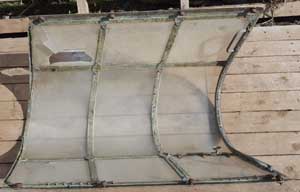
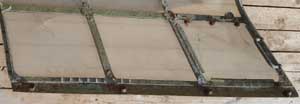
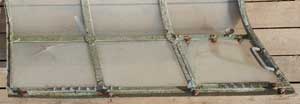
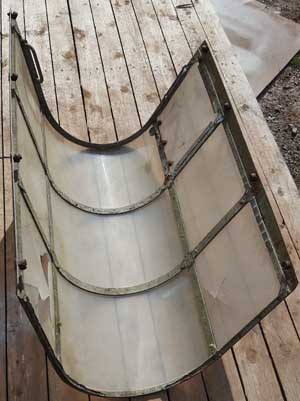 |
Hawker Hurricane Canopy
(No 8 pg1 Canopy)
This is a
superb original canopy from a Hawker Hurricane.
These
canopies are unique. It is only second one I have had in the last twenty years.
The frame is intact with all the handles and a sliding
window. The glass is no longer clear and some is cracked but
it is all original. The wheels for sliding the canopy are
there but are badly corroded. Generally the frame is in
good shape.
Please enlarge the pictures to see its condition.
Click on pictures to enlarge
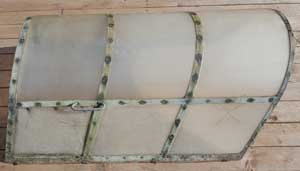
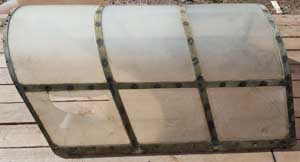
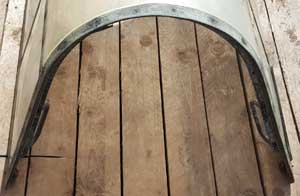 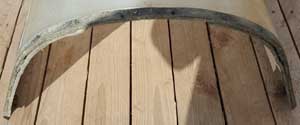
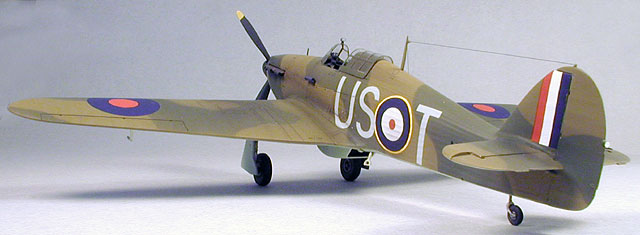
£3495


Please
contact me for a shipping
quote
|
|
Click on pictures to enlarge
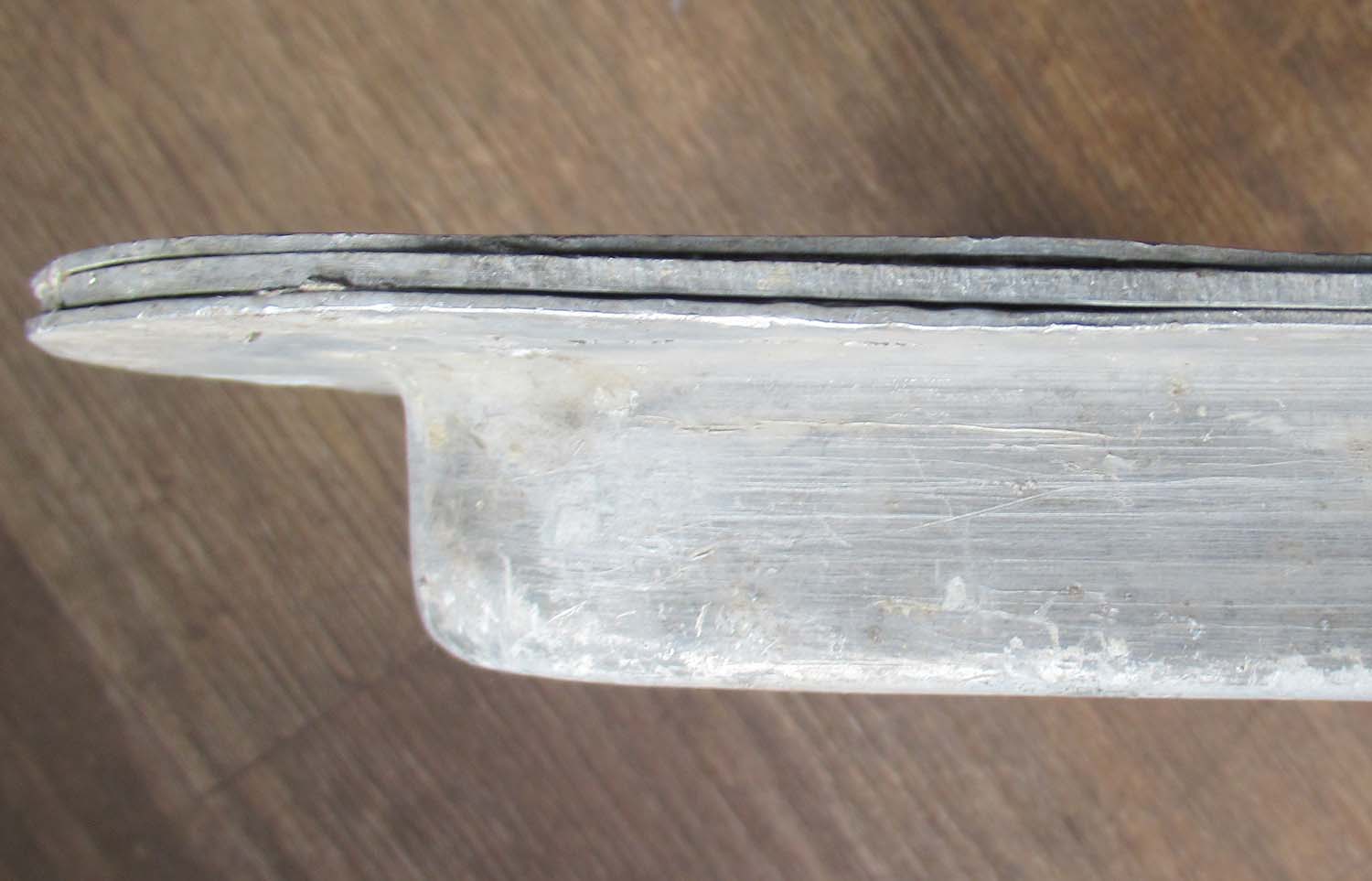
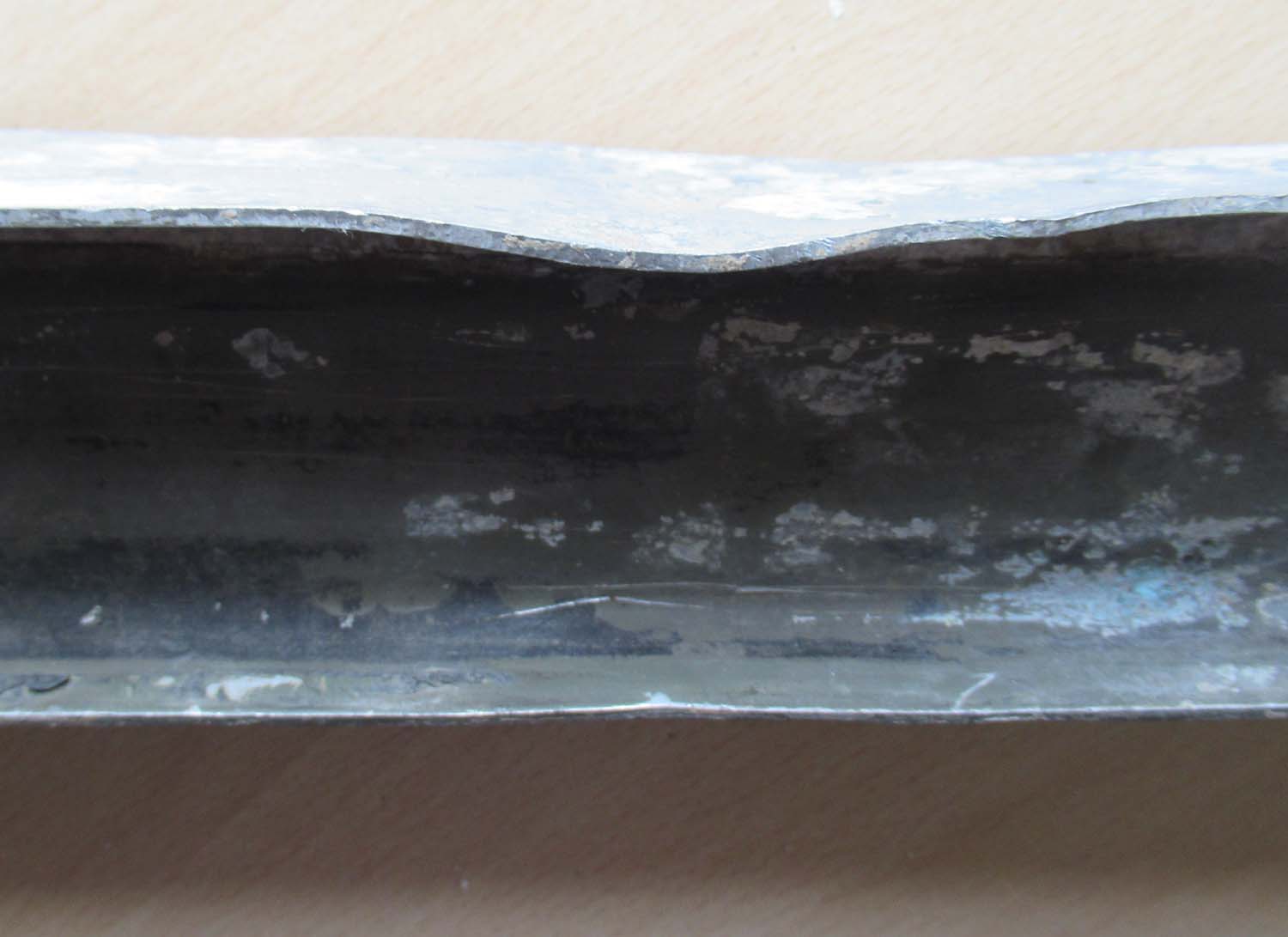
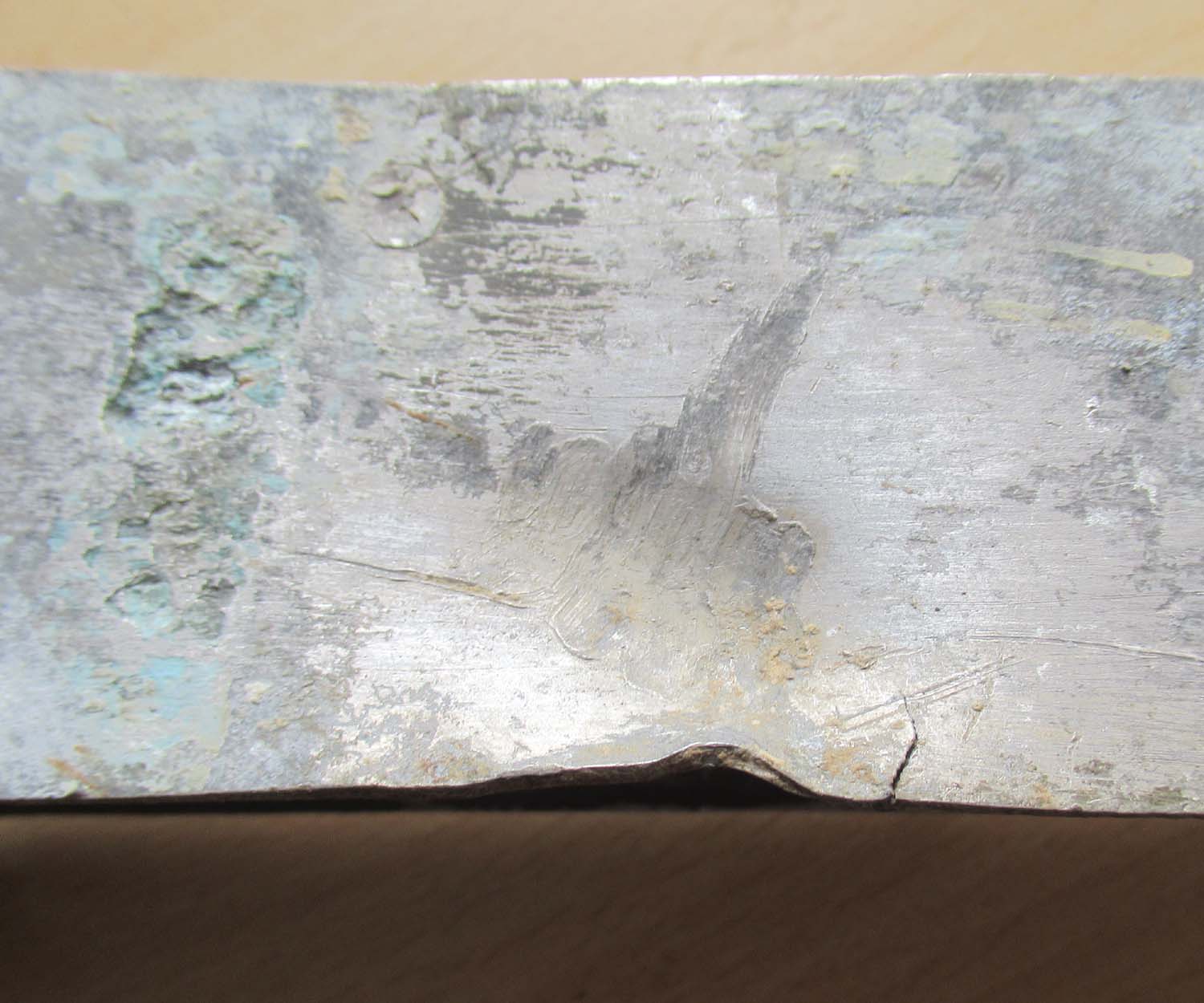
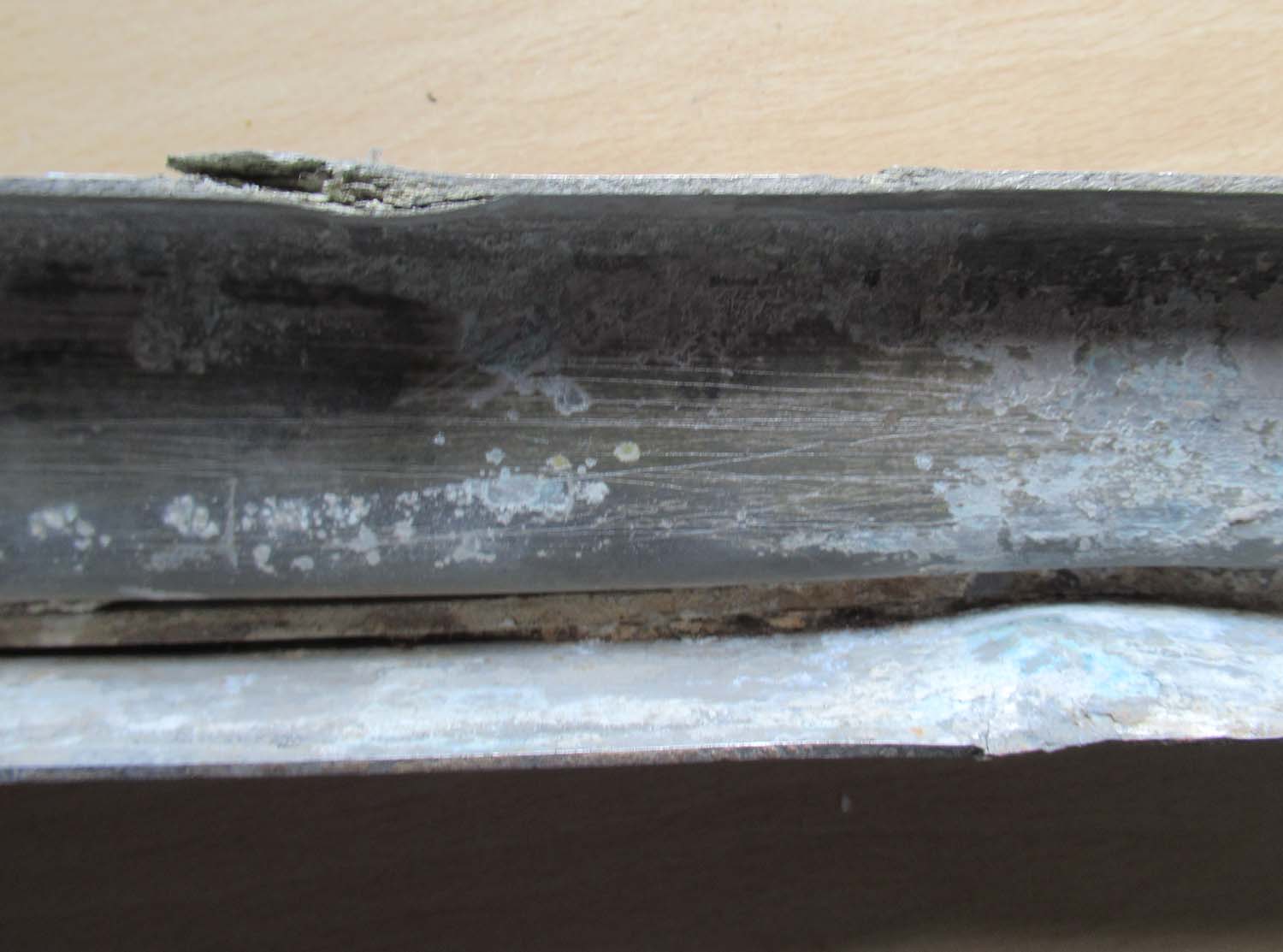
Out of
stock more wanted please
contact me |
B17 Window Frame (No
3 pg1 Canopy)
Here is a window frame for
the B17. It is in nice original condition.
No glass in this
one.
Measures approximately 47cm x
41 cm.
Click on pictures to enlarge
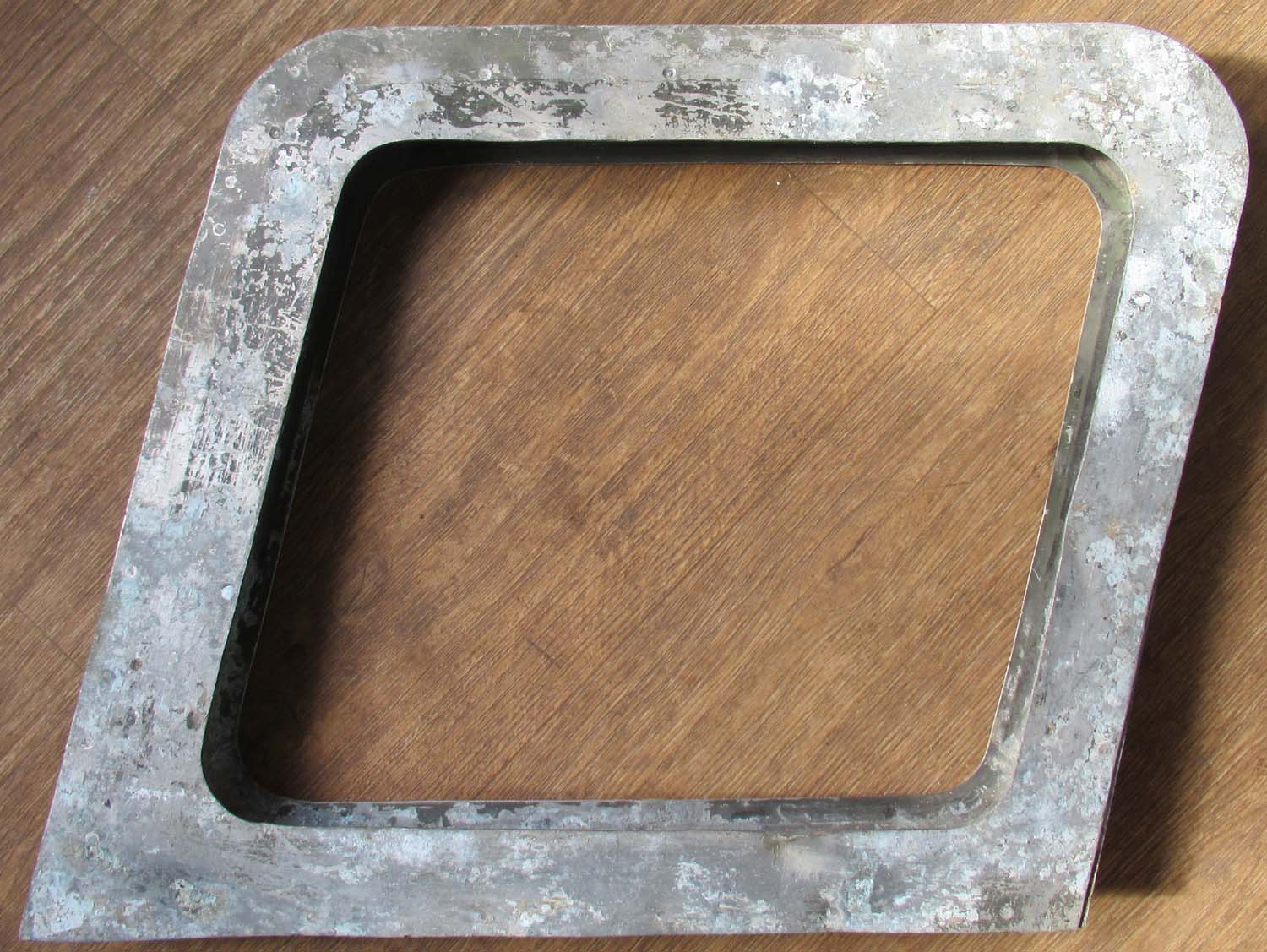
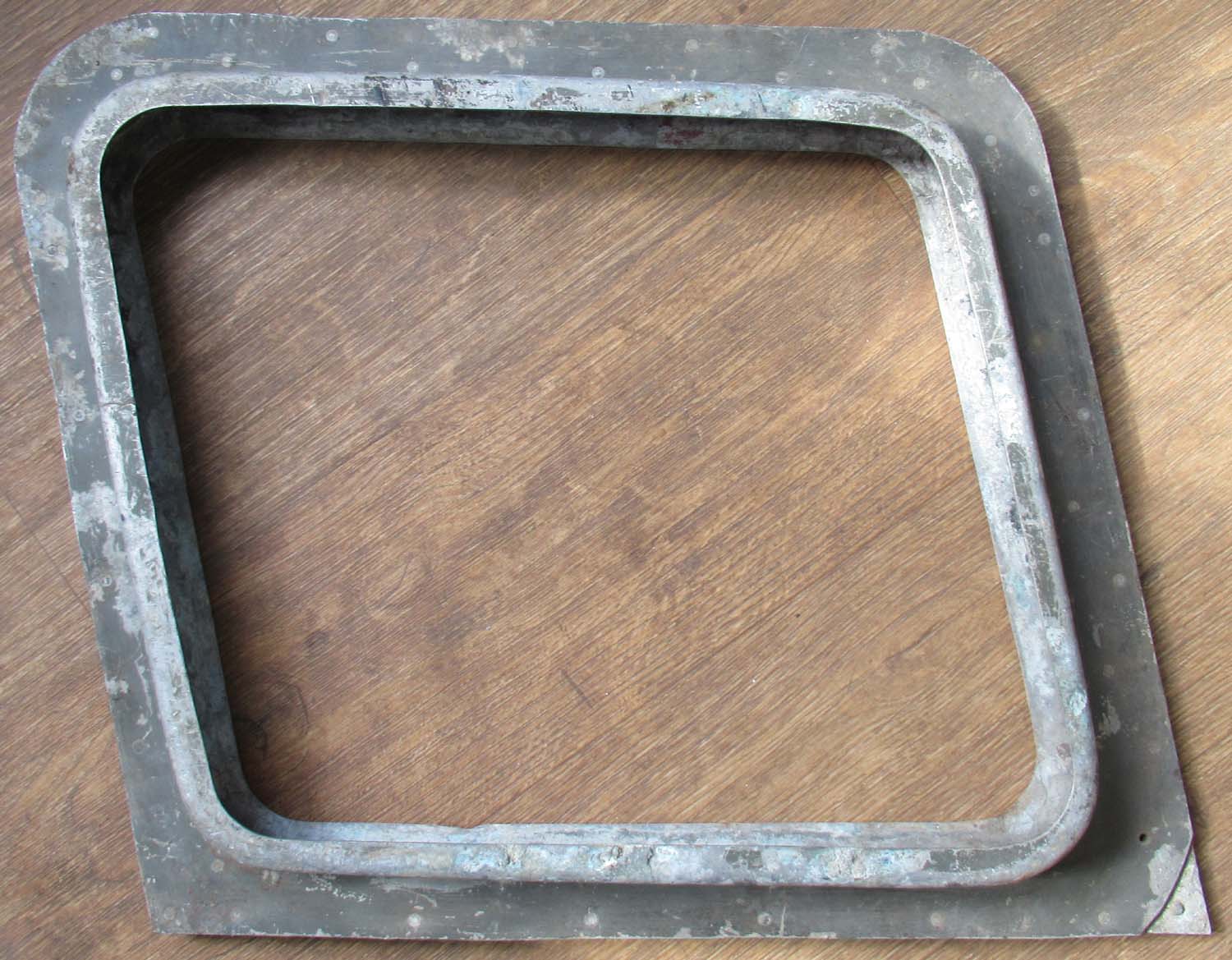
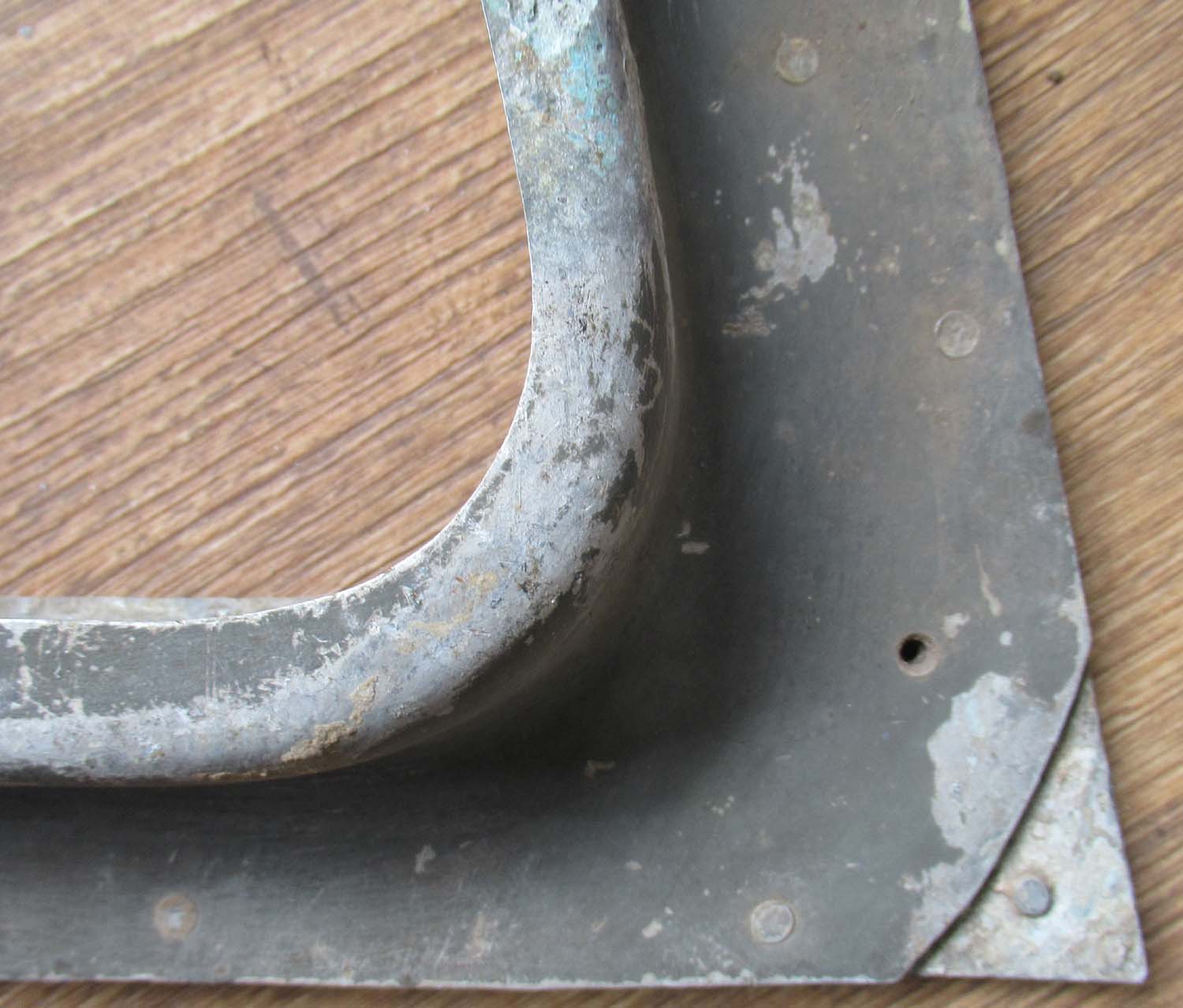
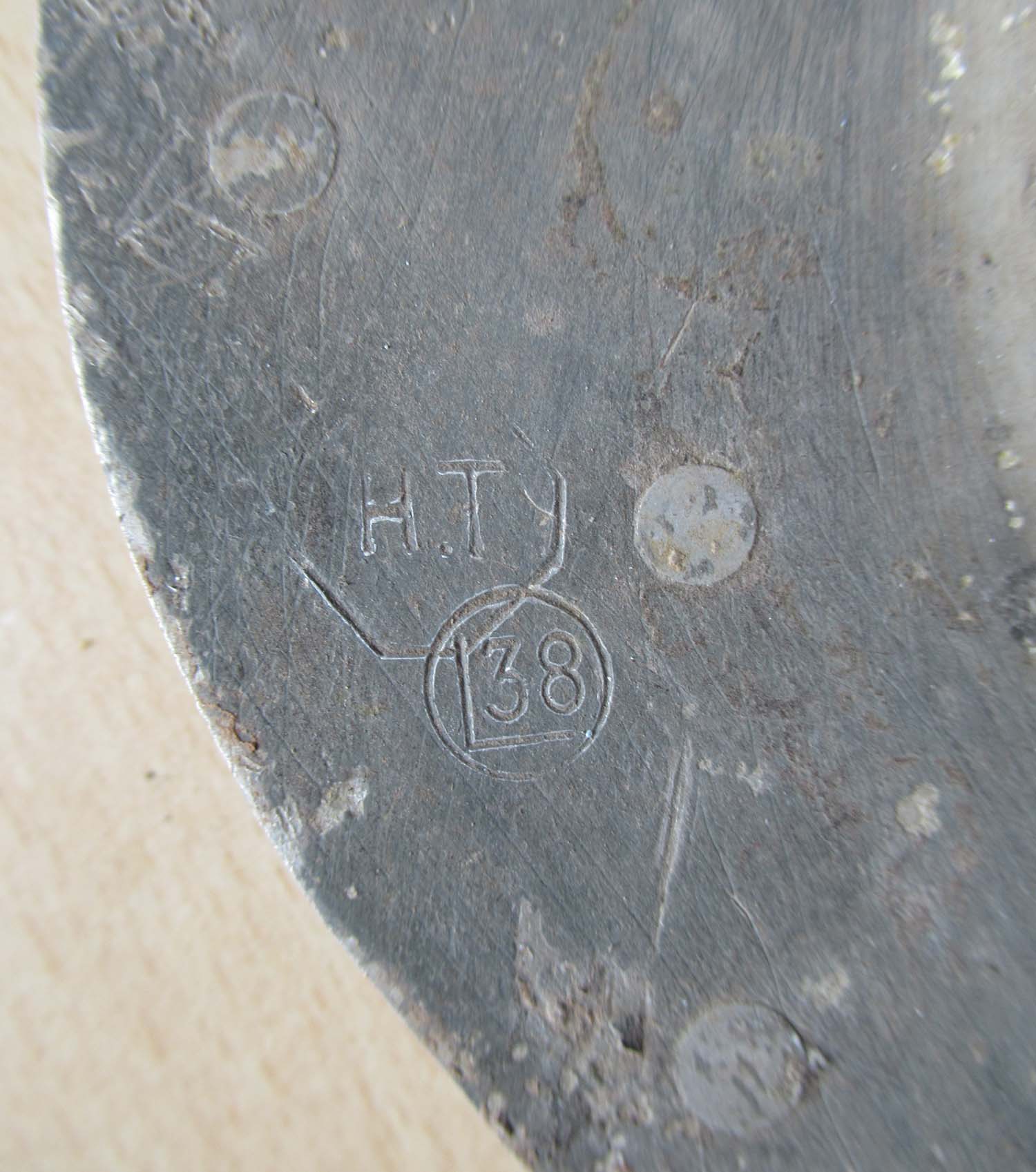
Shown in aircraft below
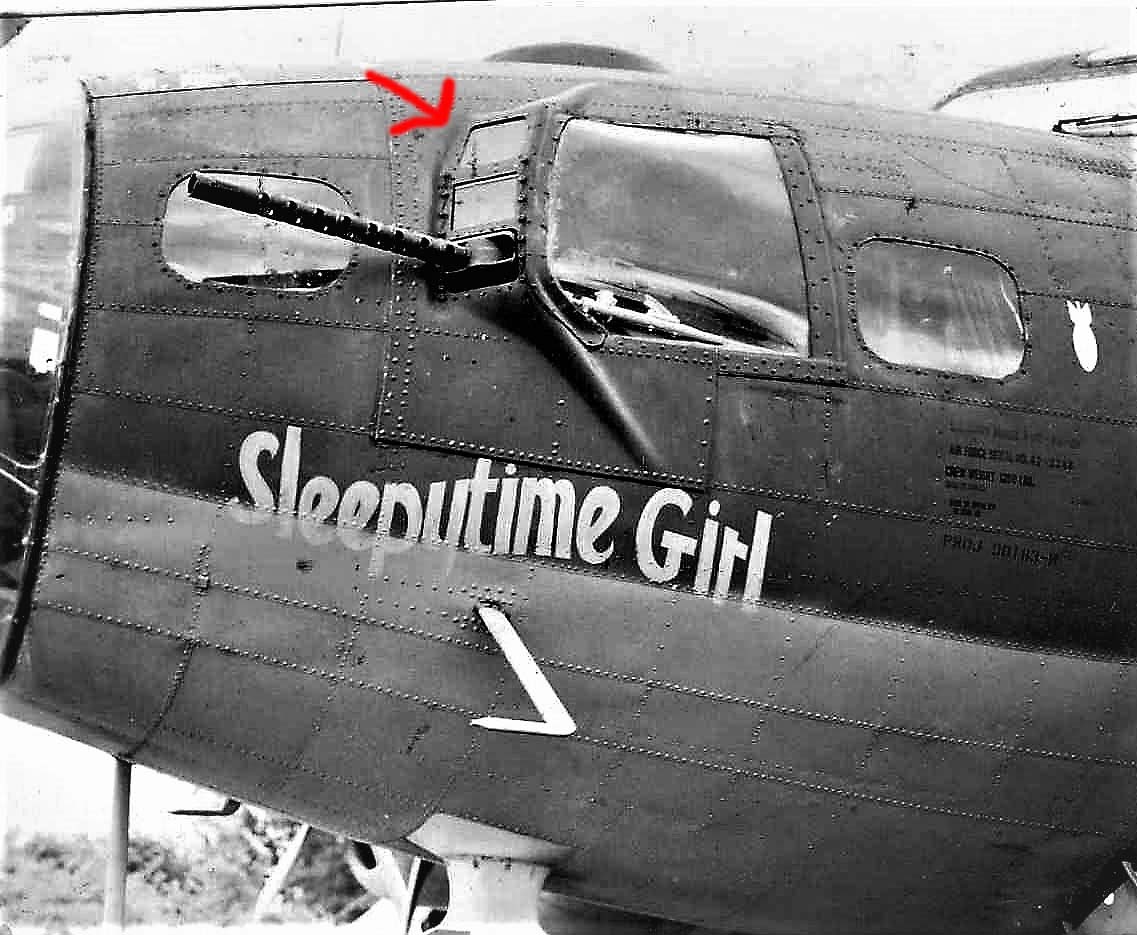
|
|
Here
is a super rare blister from a Bristol Blenheim. Please
enlarge the pictures to assess the condition. Has the usual
scratches and marks but made of really thick perspex with no
cracks.
Click on pictures to enlarge
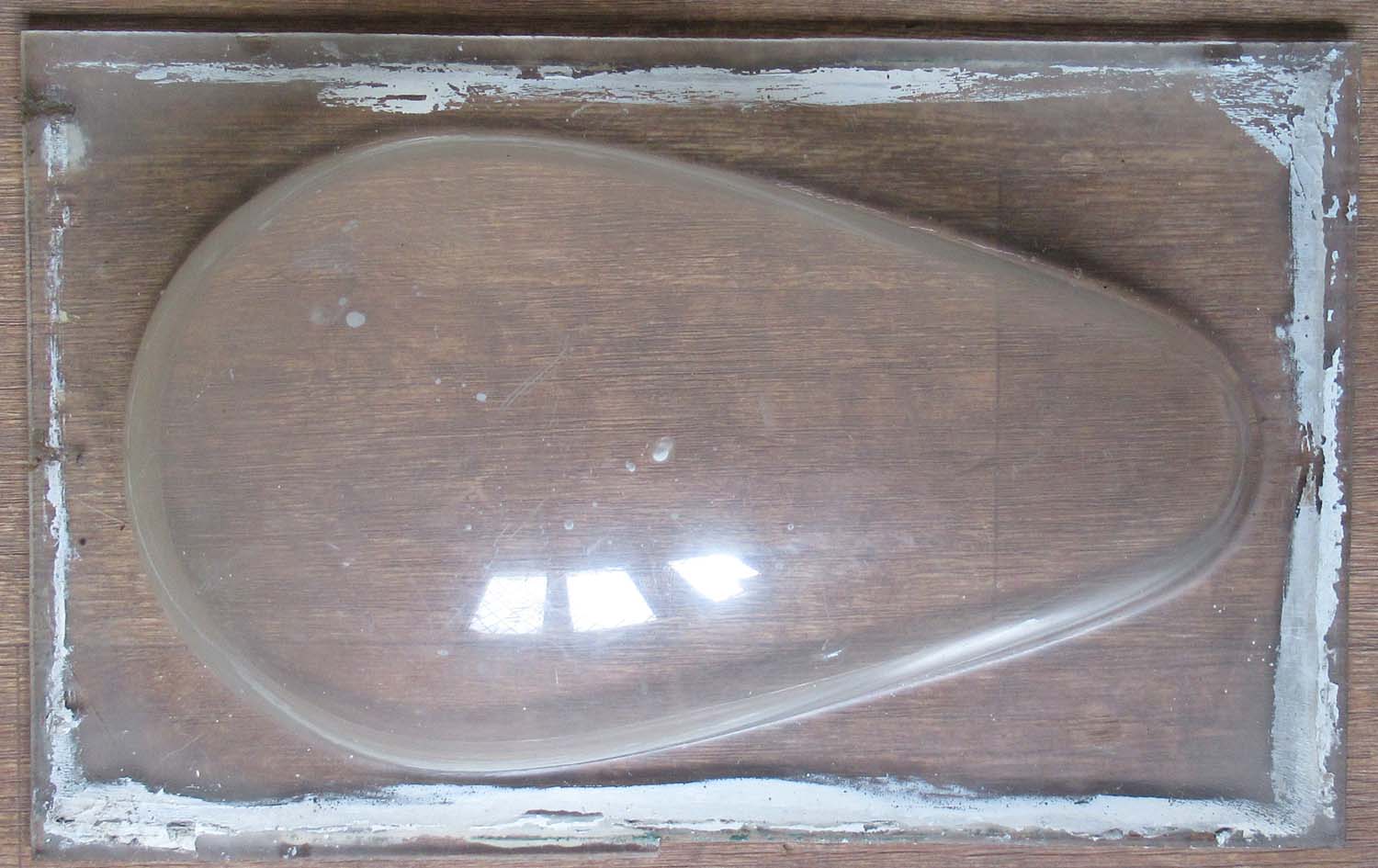

£295


|
Bristol Blenheim Blister
(No 10 pg1 Canopy)
The first Blenheims were
delivered to 114 Squadron on the 10th March
1937 at RAF Wyton, Cambridgeshire. 1500 Mk I's were built in
total and of these 1007 were in service the outbreak of
World War II in September 1939.
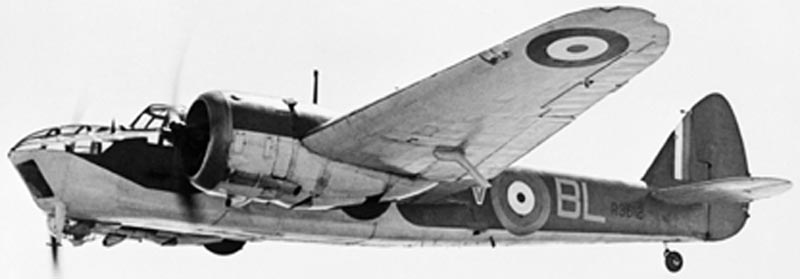
These included 147 Blenheim Mk
IF fighter
standard, fitted with four Browning machine guns. Some of
these were later equipped with Al radar and served as night
fighters in the autumn of 1940. By early 1938 it was
obvious that the Blenheim I was already obsolescent and by
the time war broke out most of the Mk I bombers were serving
in the Middle and Far East - the home-based squadrons having
rearmed with the improved Blenheim
Mk IV.
Click on pictures to enlarge
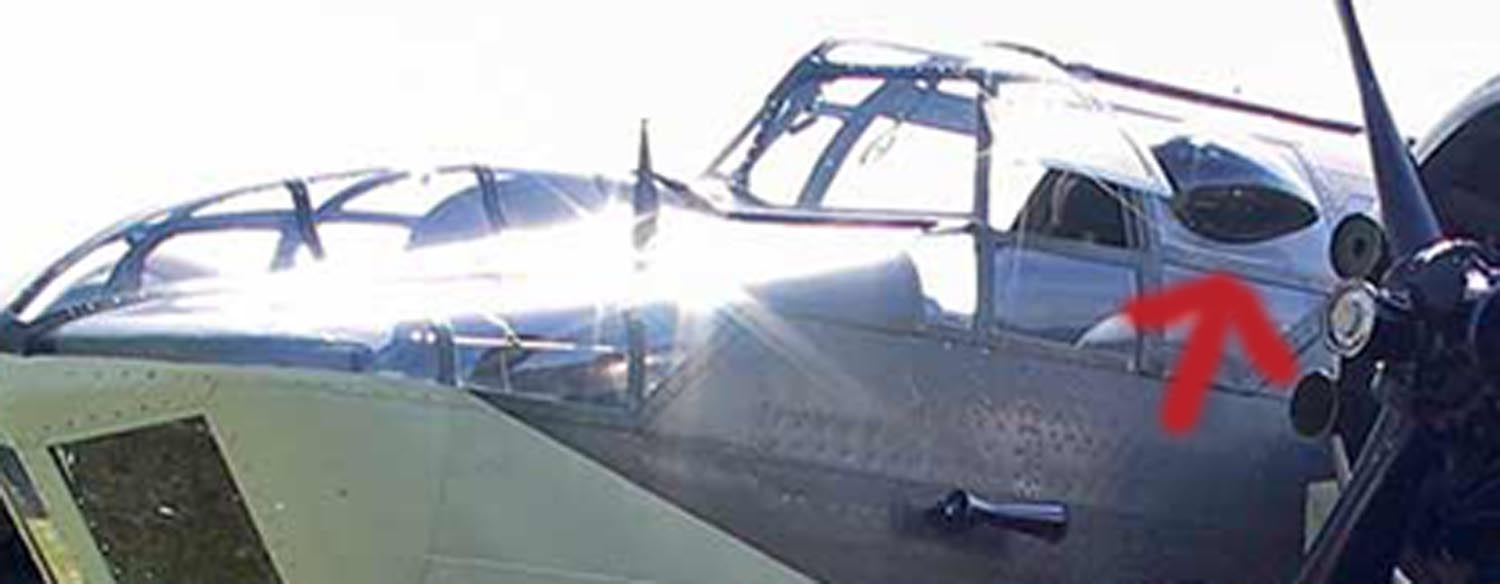
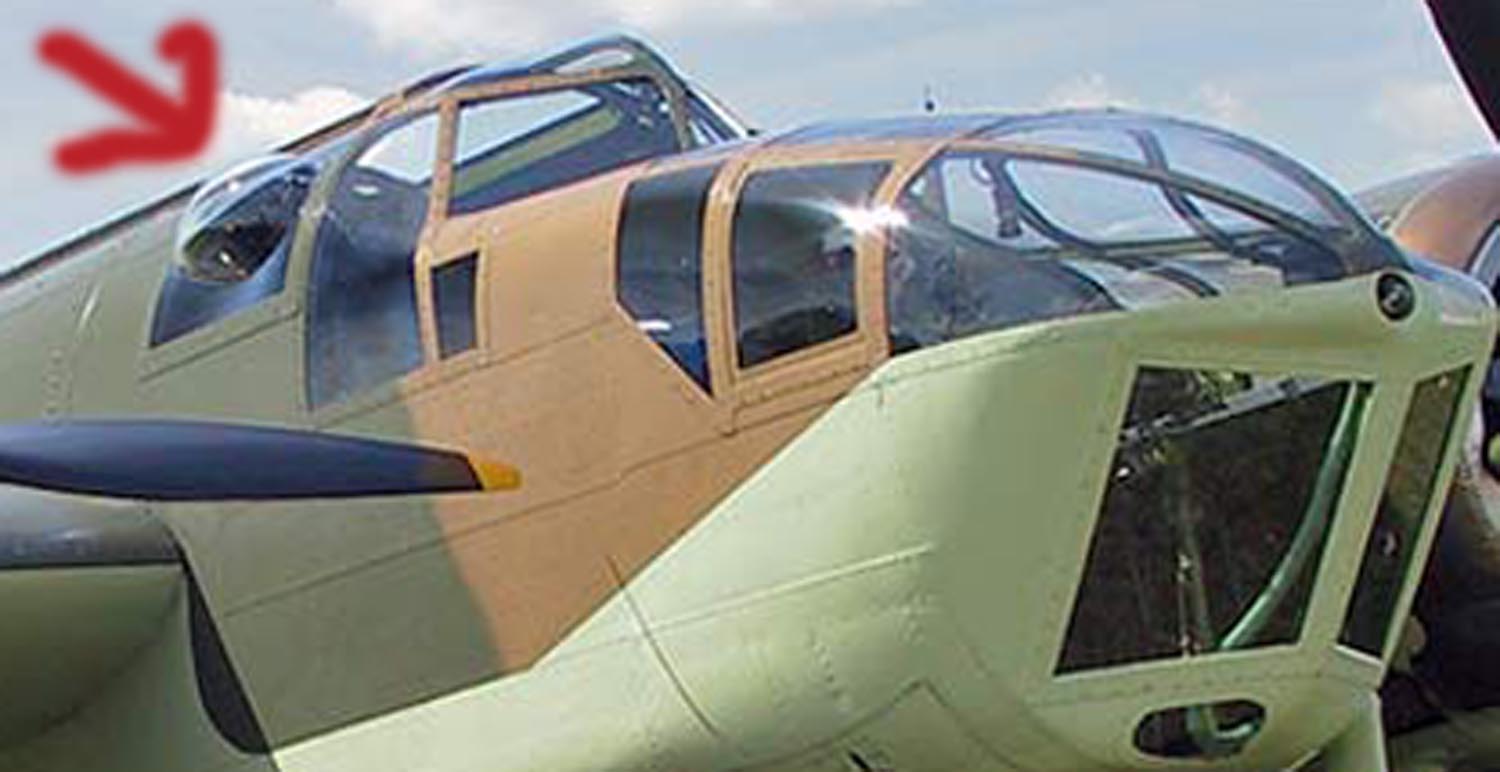
|
|
Click on pictures to enlarge
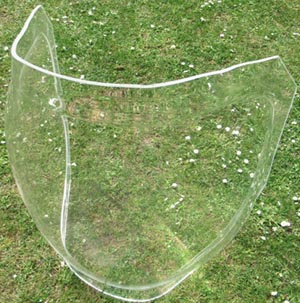
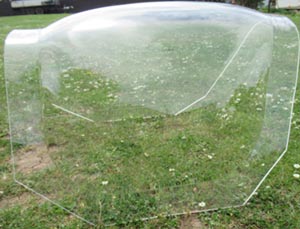
Please
contact me for a shipping
quote
|
Spitfire canopy
(No 9 pg1
Canopy)
Here is a new made Spitfire canopy in
Perspex. Perfect for a replica or cockpit.
Click on pictures to enlarge
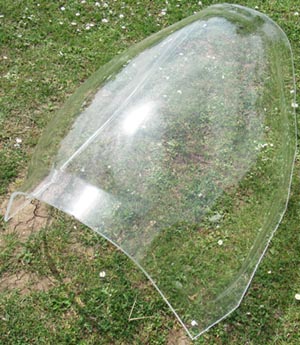 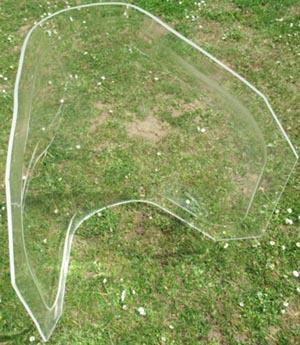
Measures approximately 71cm long, 45cm
high, 61cm wide.
£1200


|
|
Click on pictures to enlarge
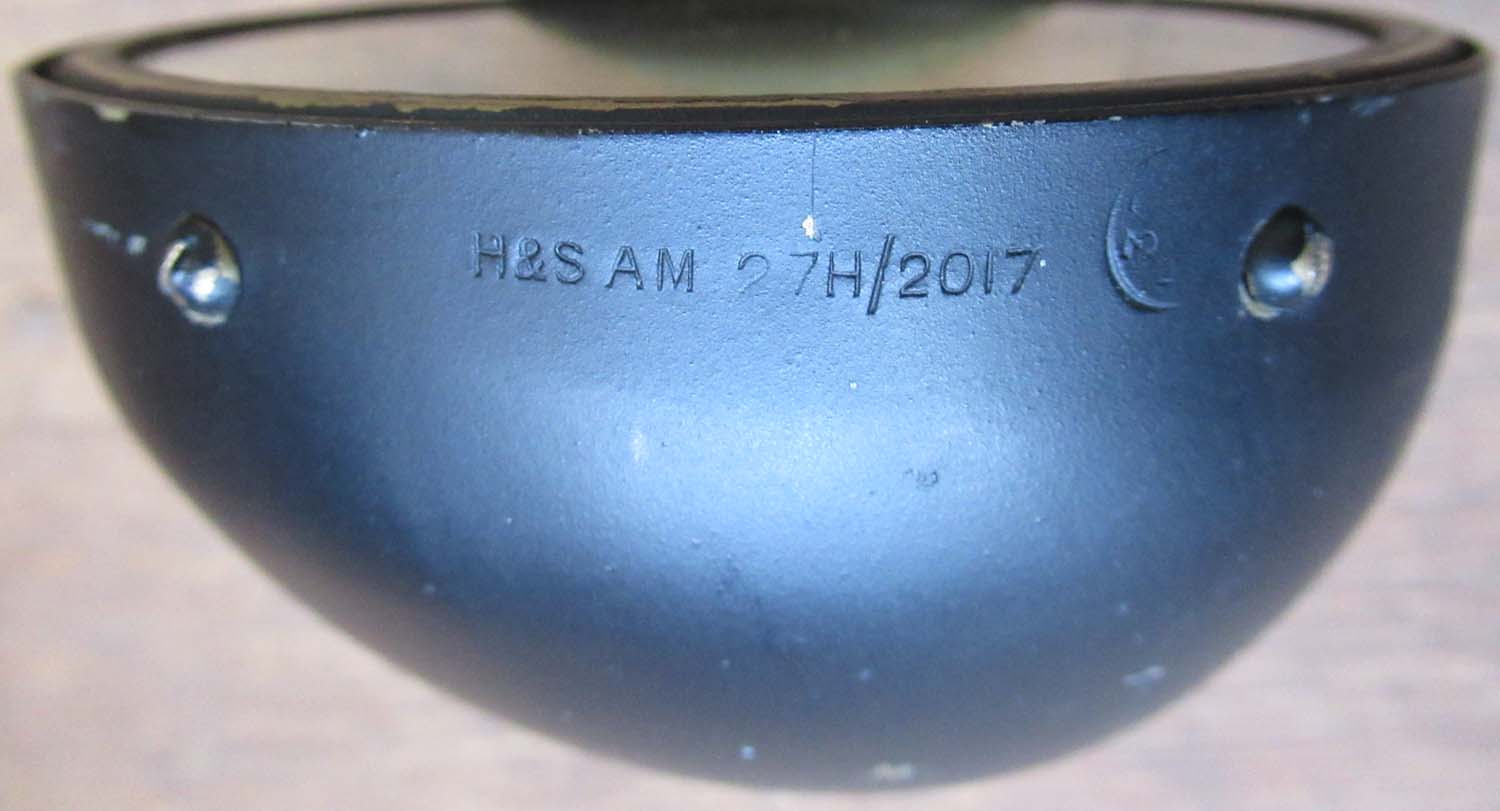
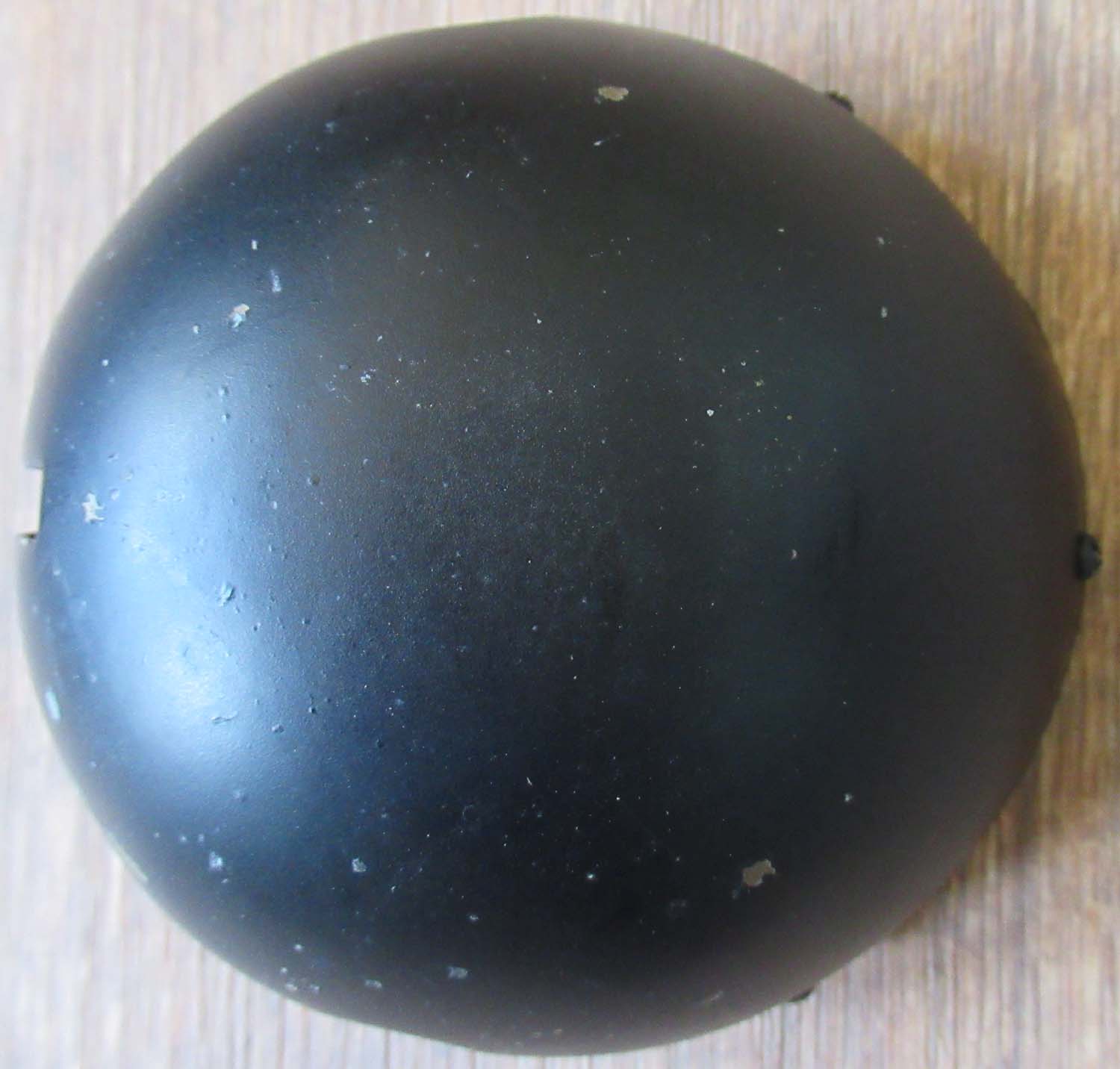
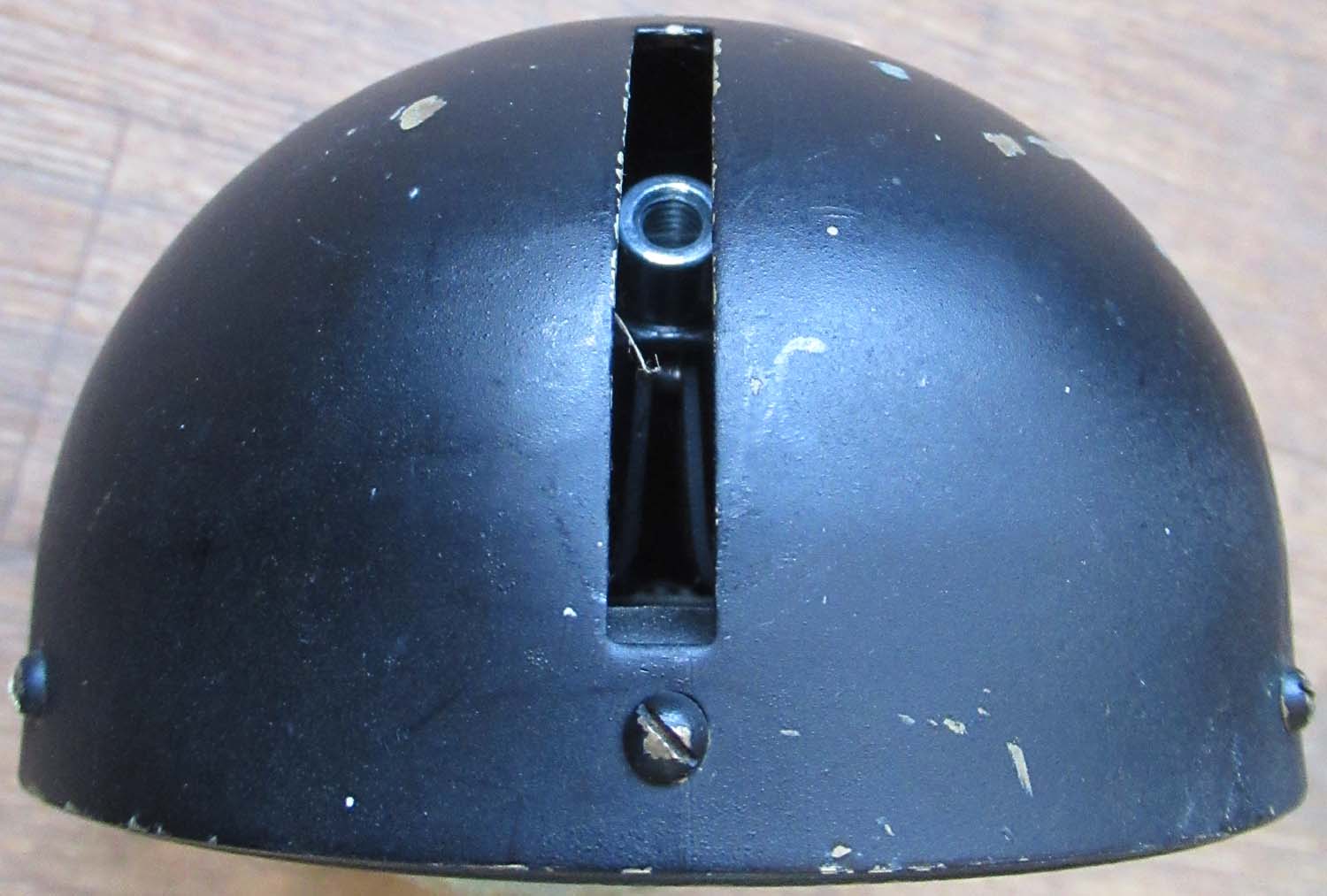 |
Spitfire Mirror
(No 7 pg1 Canopy)
Here is an original Spitfire
mirror with Air Ministry crown and reference number.
H&S A/M
27H/2017
Click on pictures to enlarge
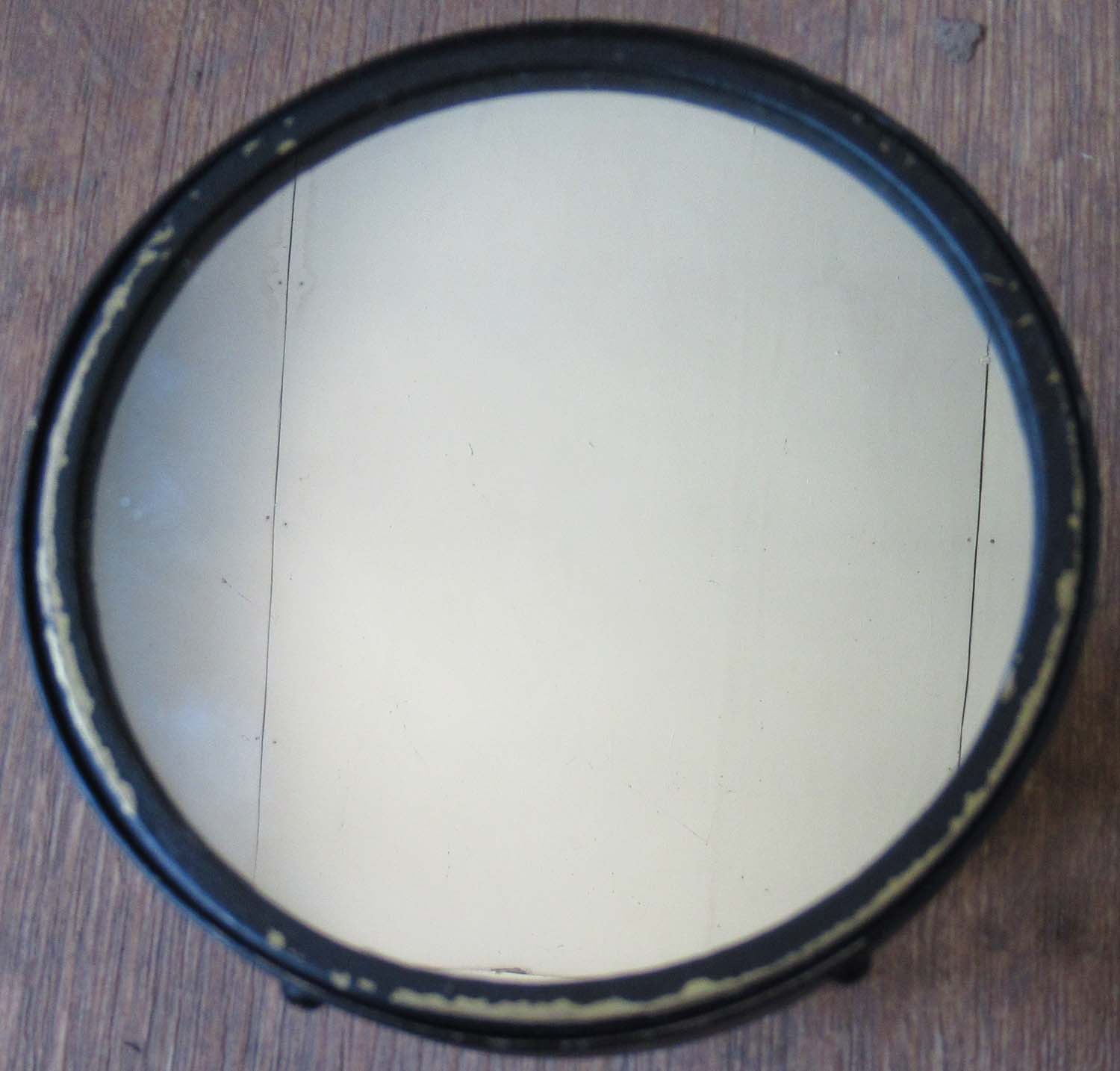
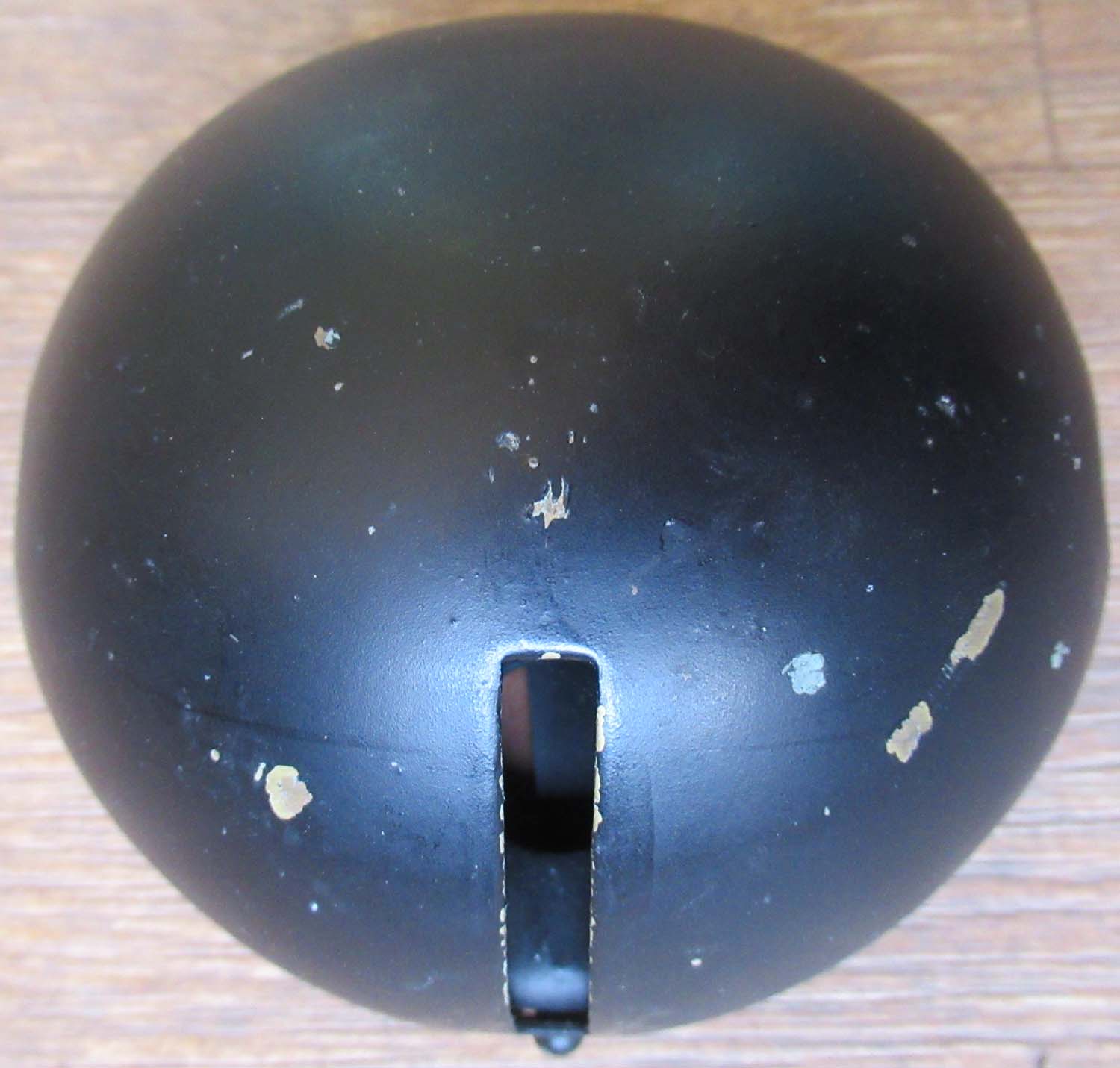
The lines on the mirror are a reflection
from the ceiling not on the glass.
Out of
stock more wanted please
contact me |
|
Click on pictures to enlarge
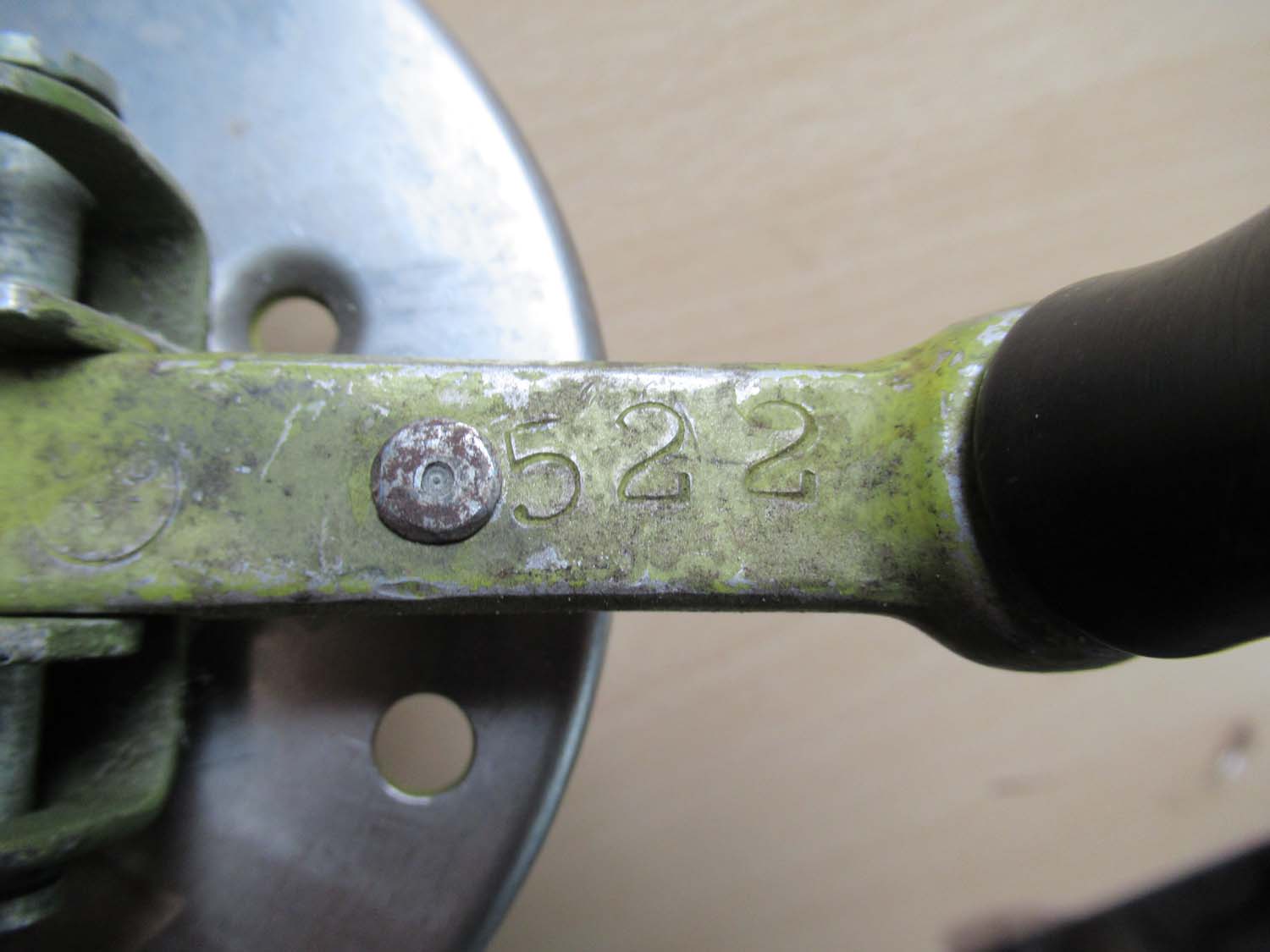
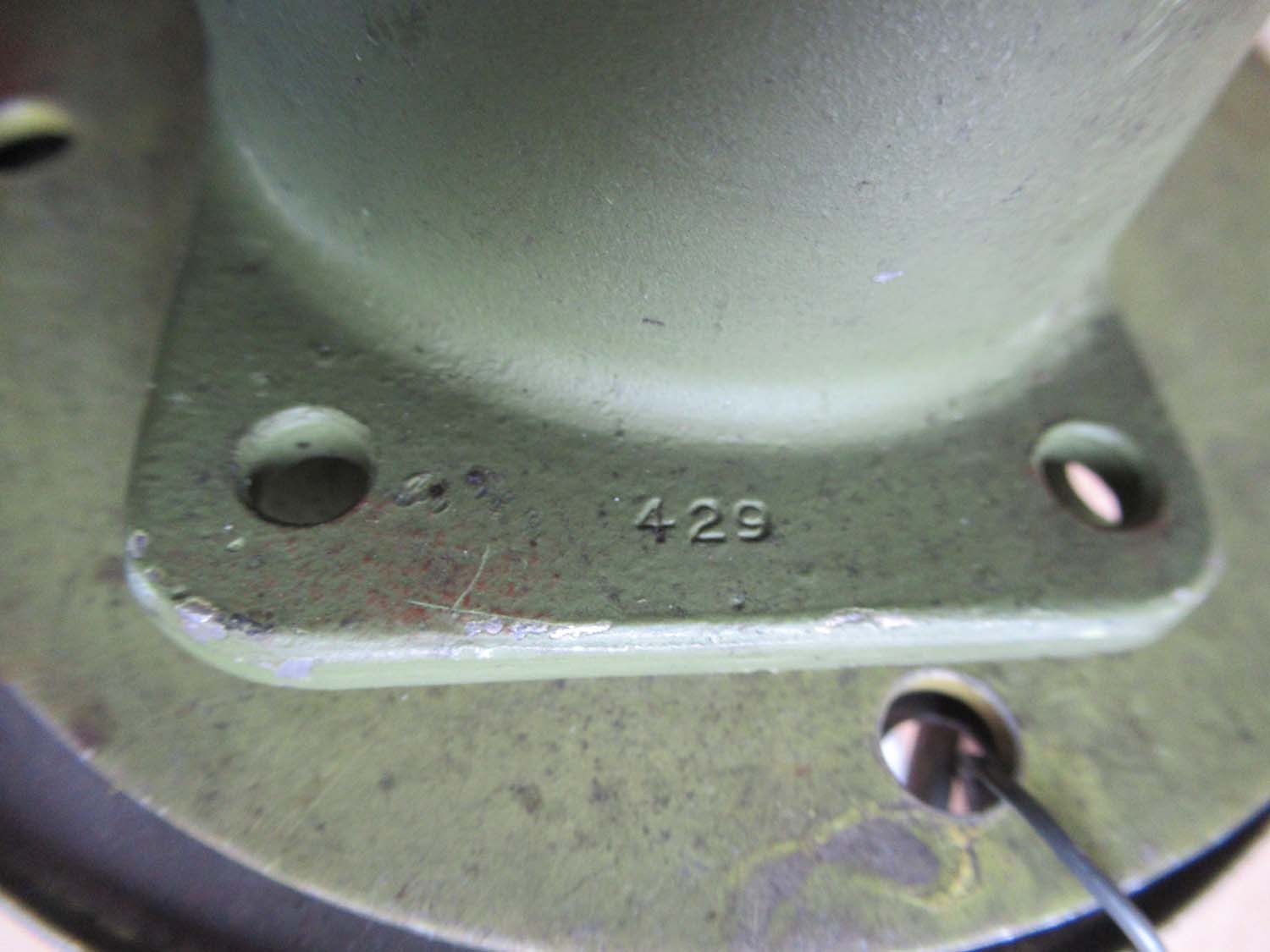
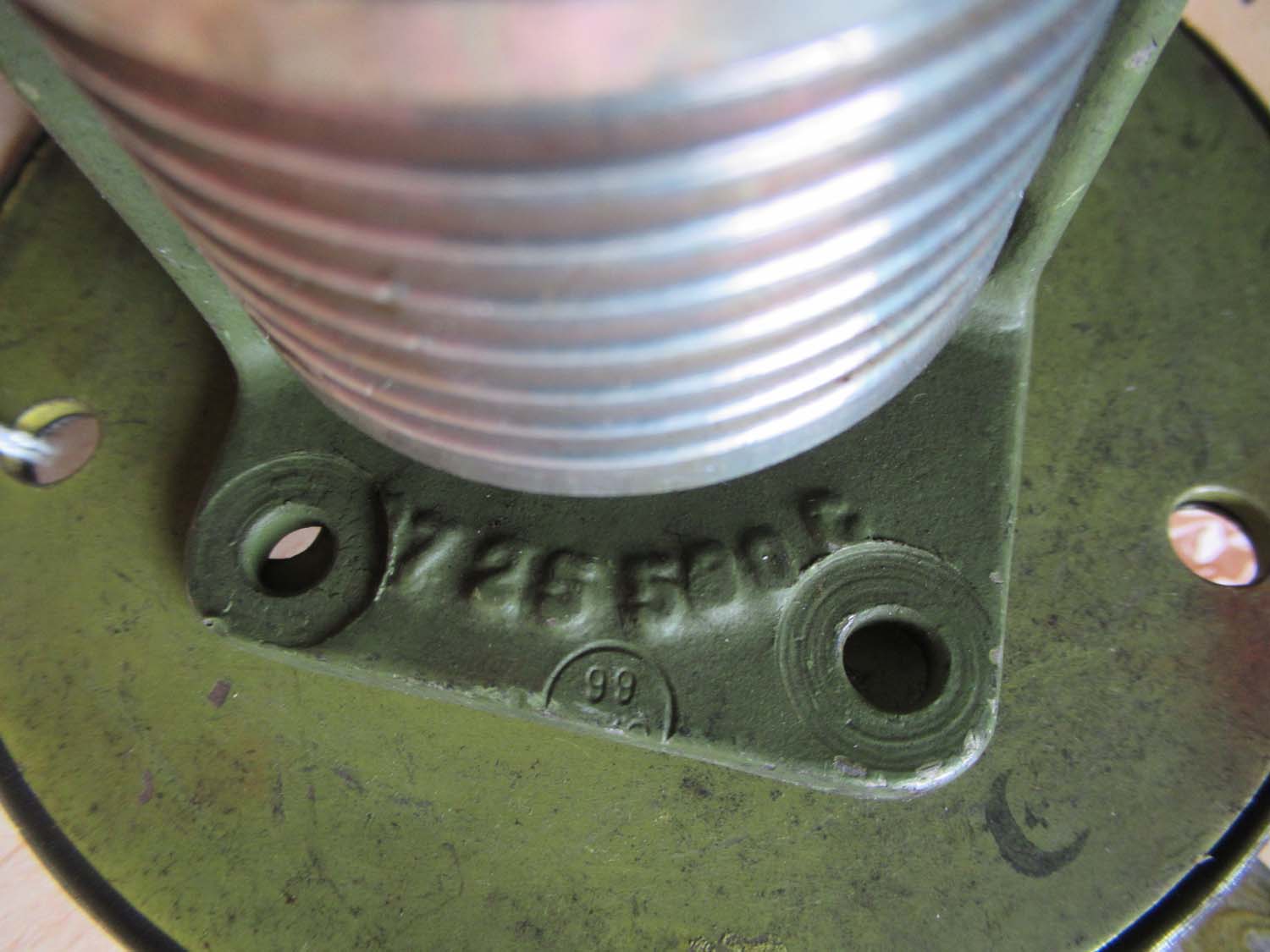

Seen in situ in a P40
under
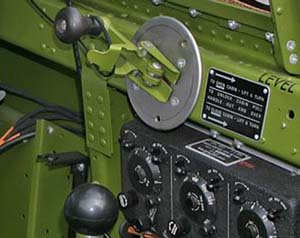 |
P 40 Canopy Crank
(No 6 pg1 Canopy)
Here is a near mint condition canopy crank
handle for a P40, used to open and close the canopy. It comes
with its original instruction label. I see no reason why
this peace should not fly again subject to the relevant
checks.
522
429
725 580 G
Click on pictures to enlarge
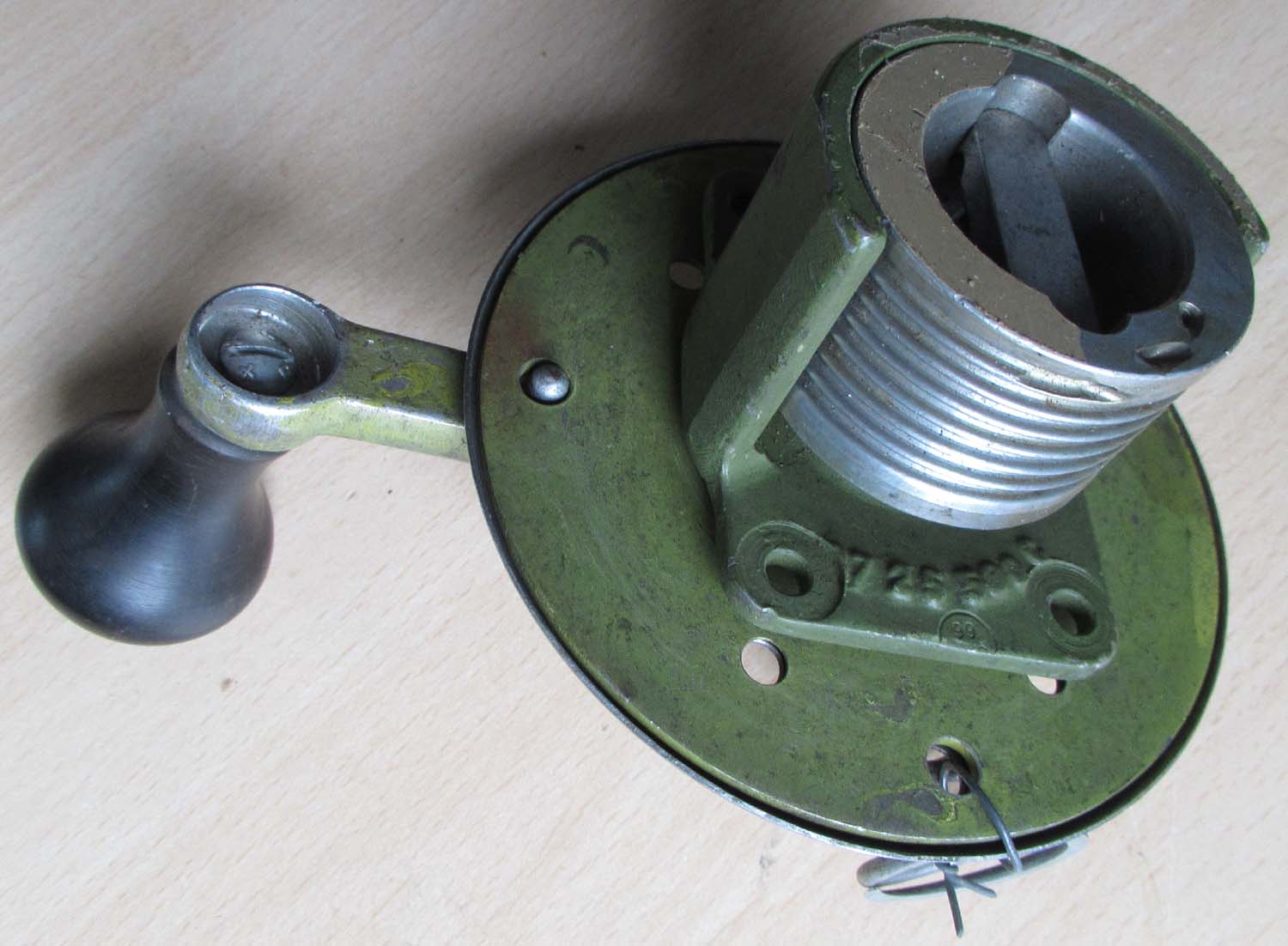
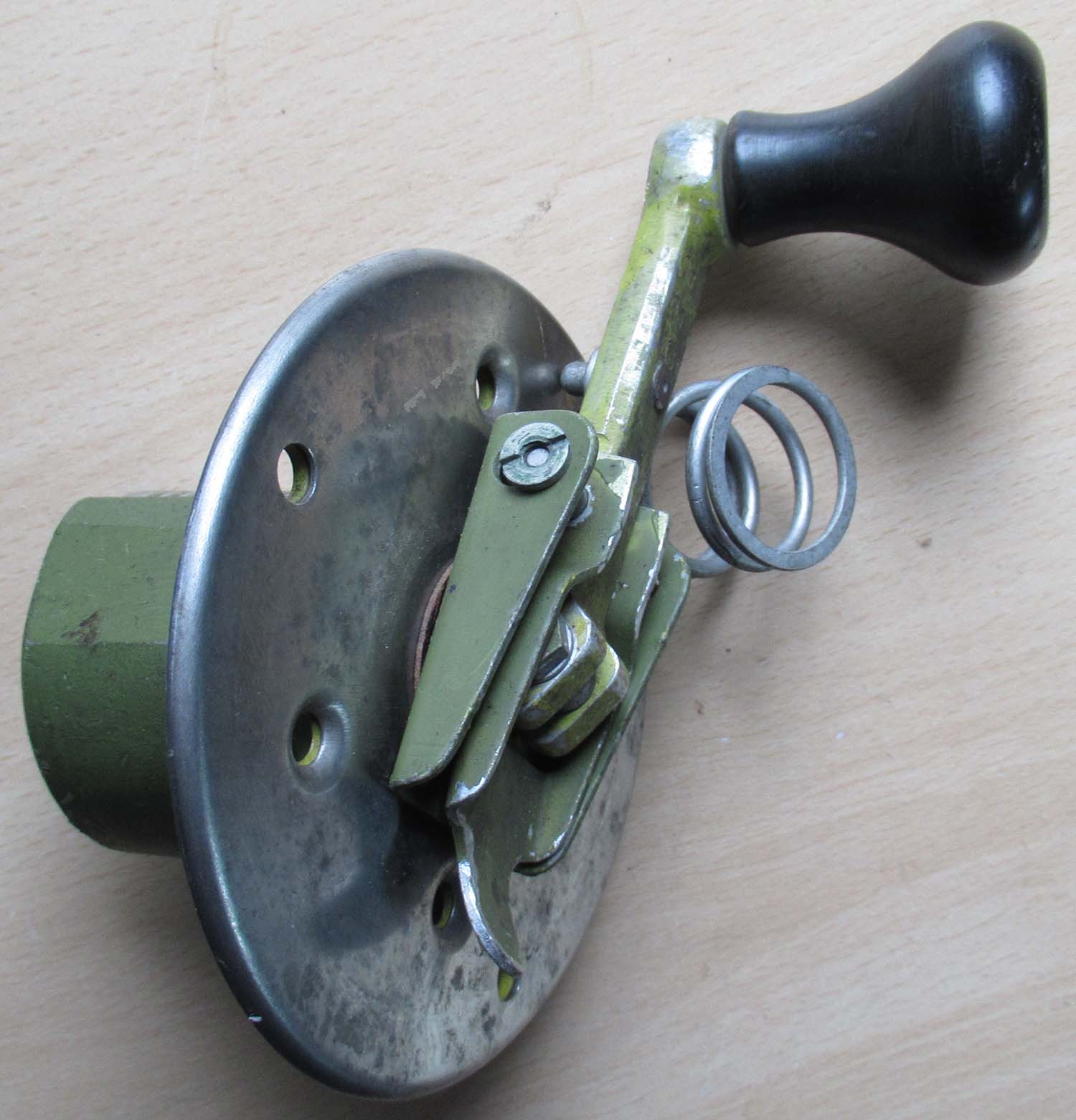
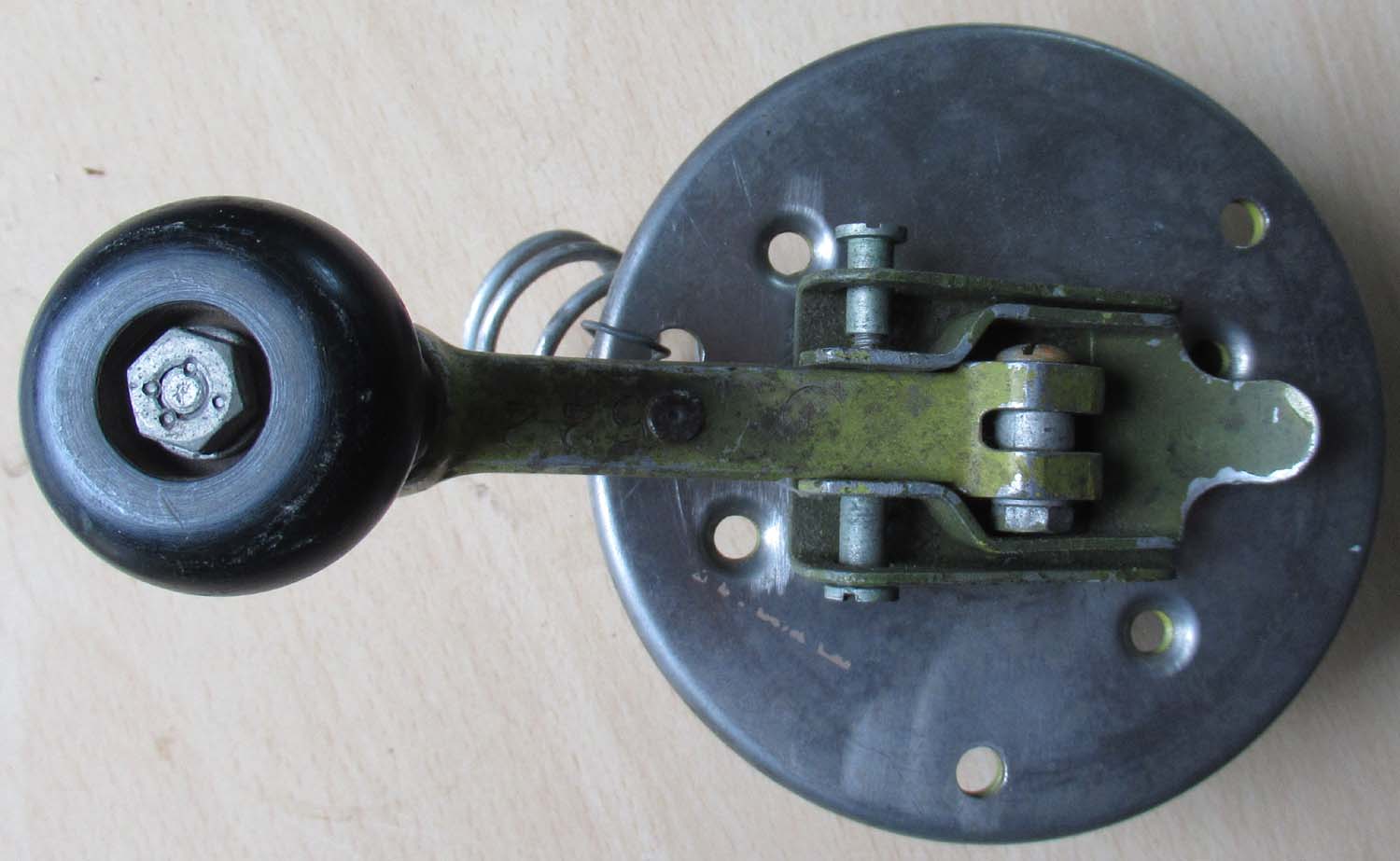
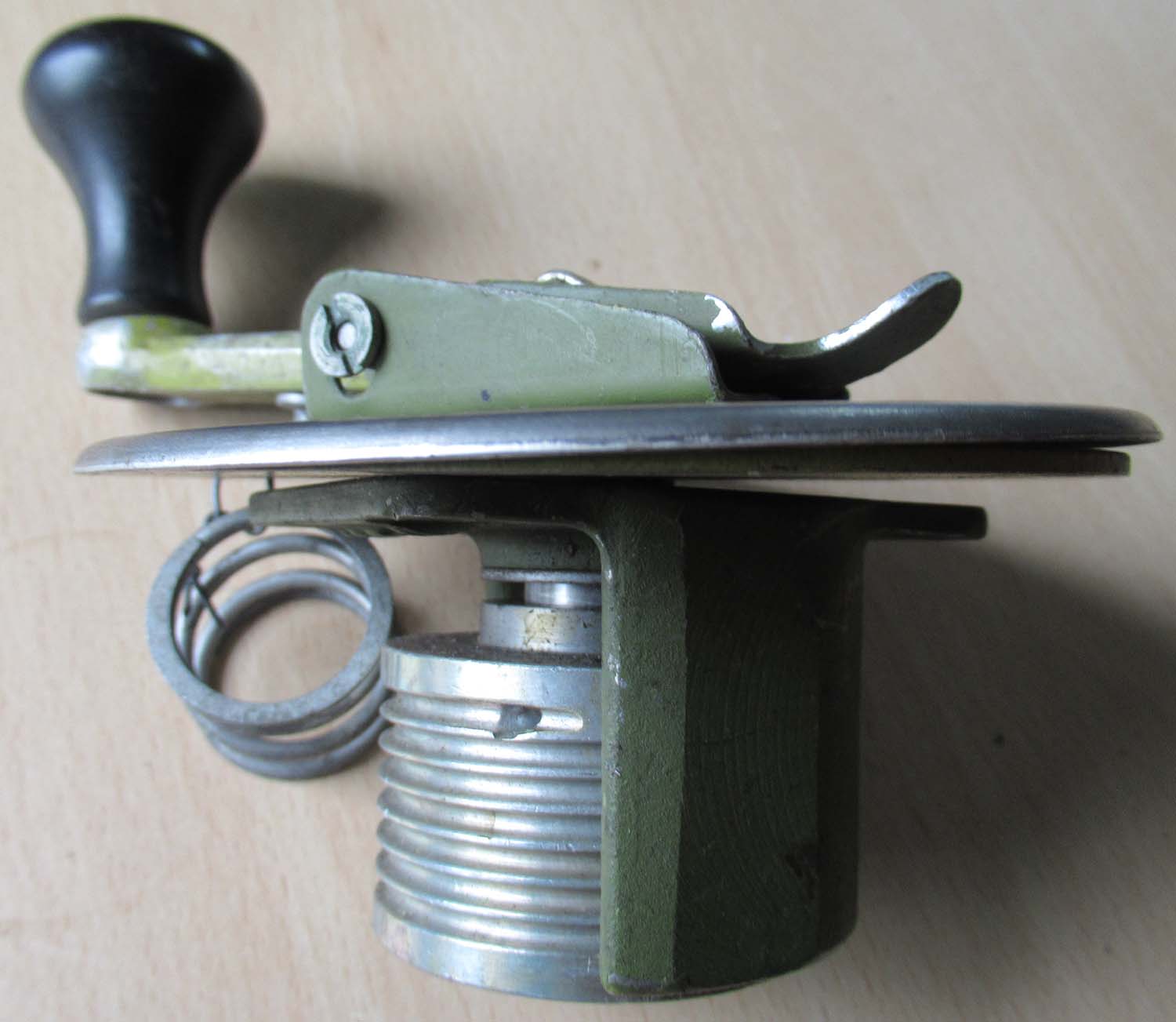
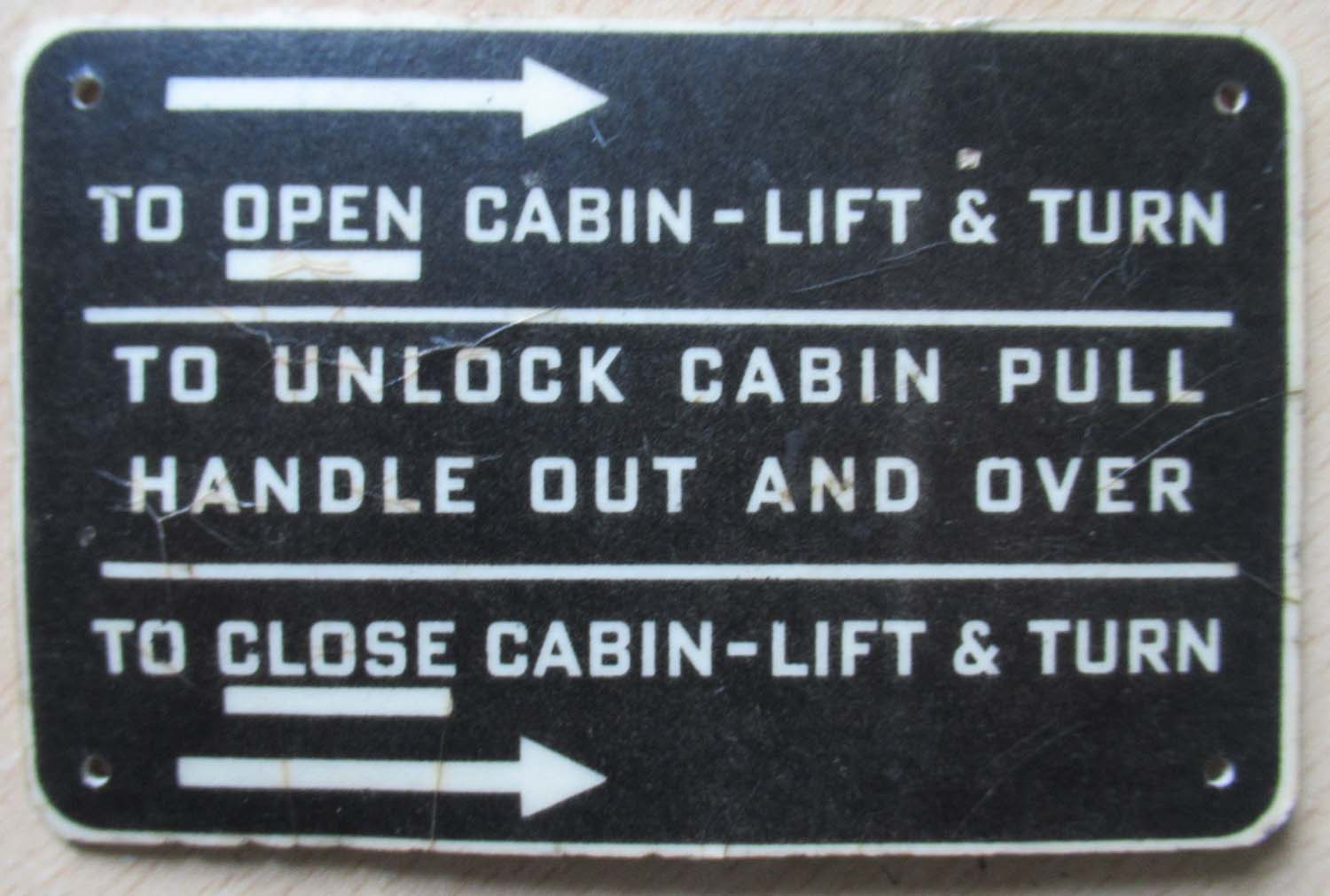
Shown under the P 40:
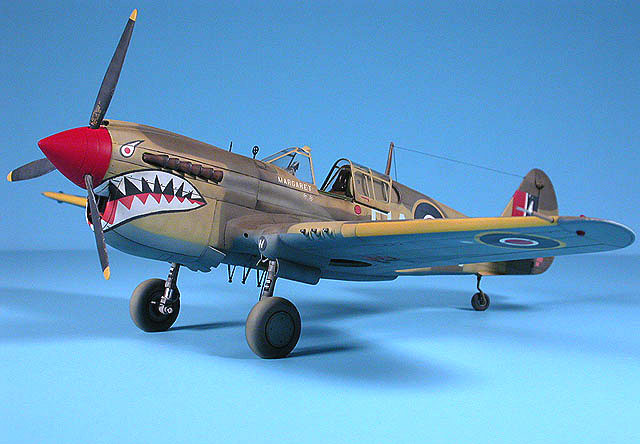
First flown in April 1941, the P-40C was
considered the first truly combat-ready version of the P-40
line.
The aircraft’s gross weight had
increased from 7,215 to 8,058 pounds from the earlier design
, an increase of approximately 11 percent, with no increase
in engine power. The P-40C’s rate of climb suffered, it was
less manoeuvrable, and its maximum speed fell to 340 mph.
By comparison, the Messerschmitt
Me-109E used by the Luftwaffe in 1941 weighed only 6,100
pounds and had a top speed of 360 mph.
By the end of 1941 the USAAC had deployed P-40s overseas.
Thirty were flown to Iceland from the aircraft carrier Wasp,
and 99 of them were stationed in Hawaii. In addition, four
squadrons of P-40s were deployed in the Philippines.
It was with the RAF that the
Tomahawk Mk.II first saw action, however, flying
reconnaissance sorties and fighter sweeps across the English
Channel with the RAF and Royal Canadian Air Force (RCAF) in
1941.
By May 1941 Tomahawks were also operating in the
Middle East, eventually serving in that theatre with
Australian and South African fighter squadrons as well as
the RAF. In addition, the British sent 195 Tomahawks to the
Soviet Union after the Germans invaded that country on June
22, 1941.
£395


|
|
Click on picture to enlarge
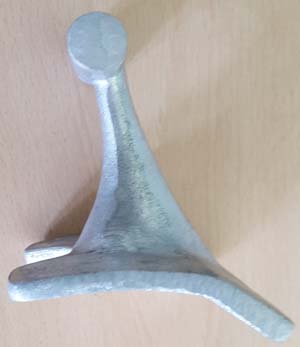
£250 each


|
Mk I/II Spitfire Mirror
Stalk In L99 Aircraft Alloy
(No 5 pg1 Canopy)
Reproduction stalk for the
early square type mirror.
Made in L99 aircraft alloy.
Will require a hole
drilled to fit.
Click on picture to enlarge
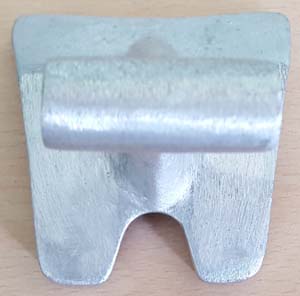
Four available
|
|
Click on picture to enlarge

Out of
stock more wanted please
contact me |
Spitfire Canopy
Emergency Release Ball (No 4 pg1 Canopy)
This is
a new old stock Spitfire emergency release ball.
Almost
impossible to find in any condition and this is like new.
Click on picture to enlarge
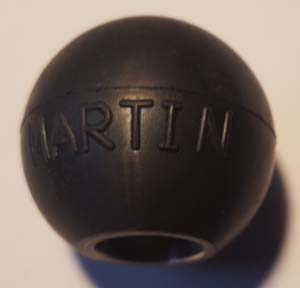
|
|
Click on pictures to enlarge
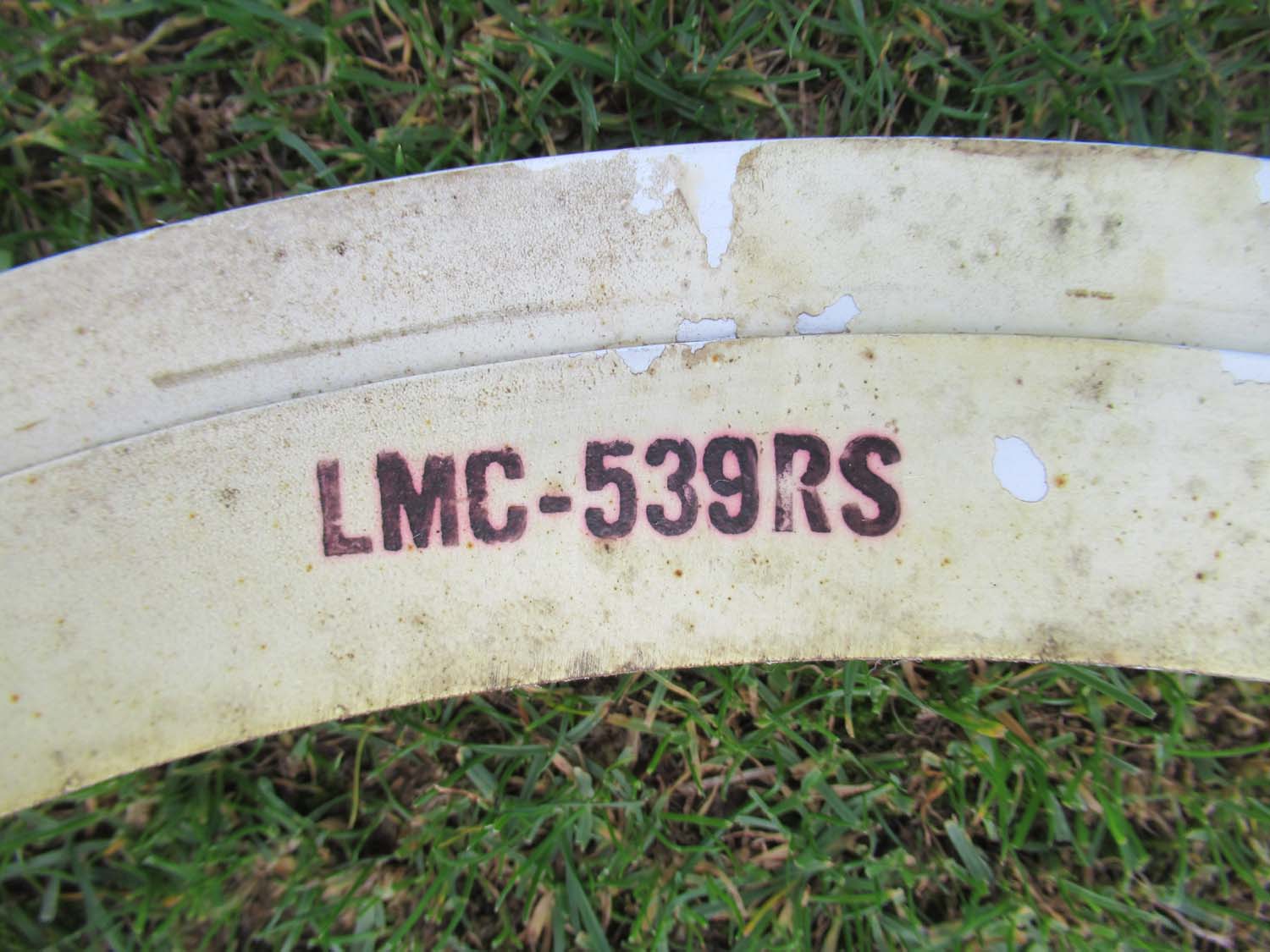
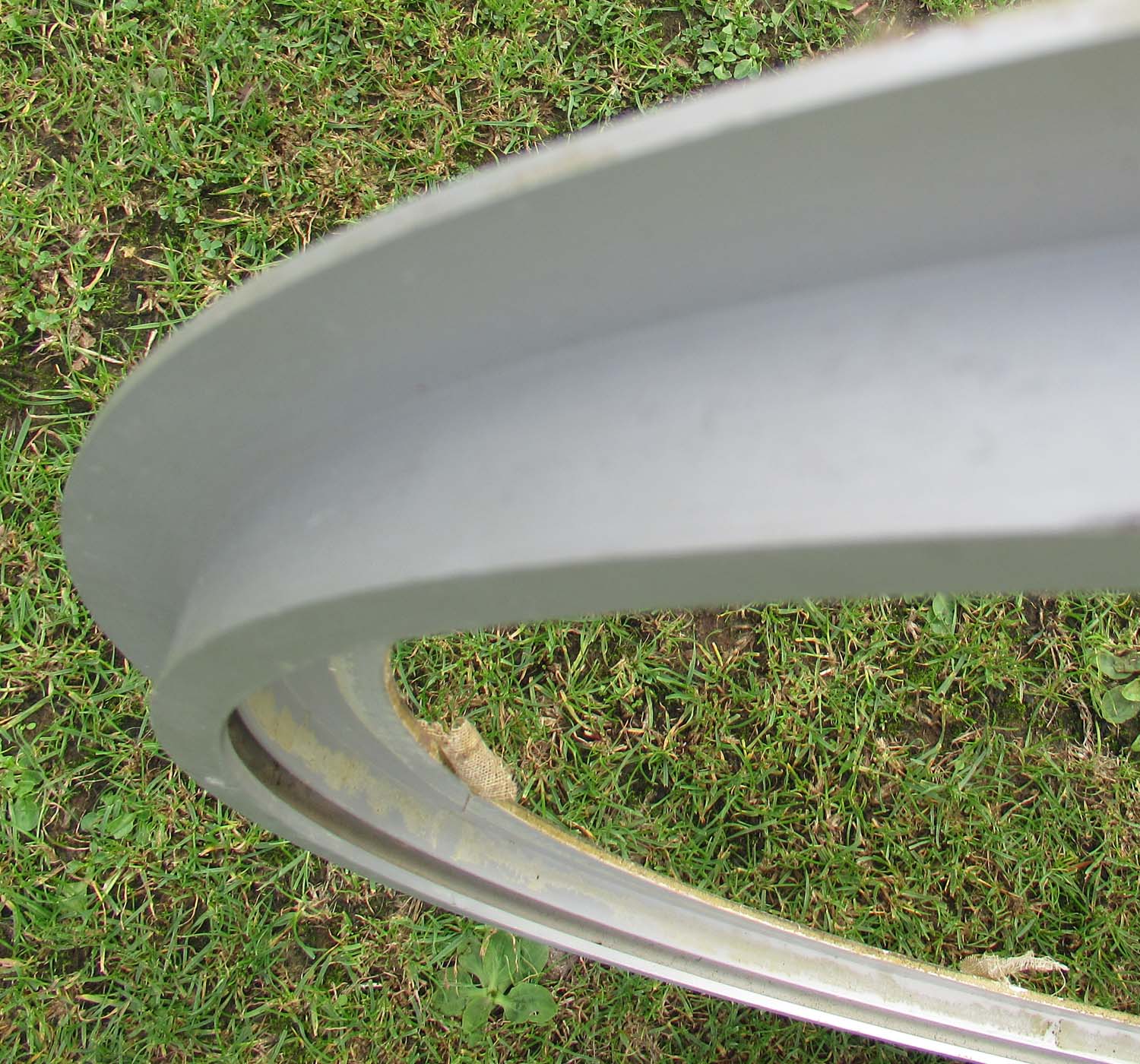
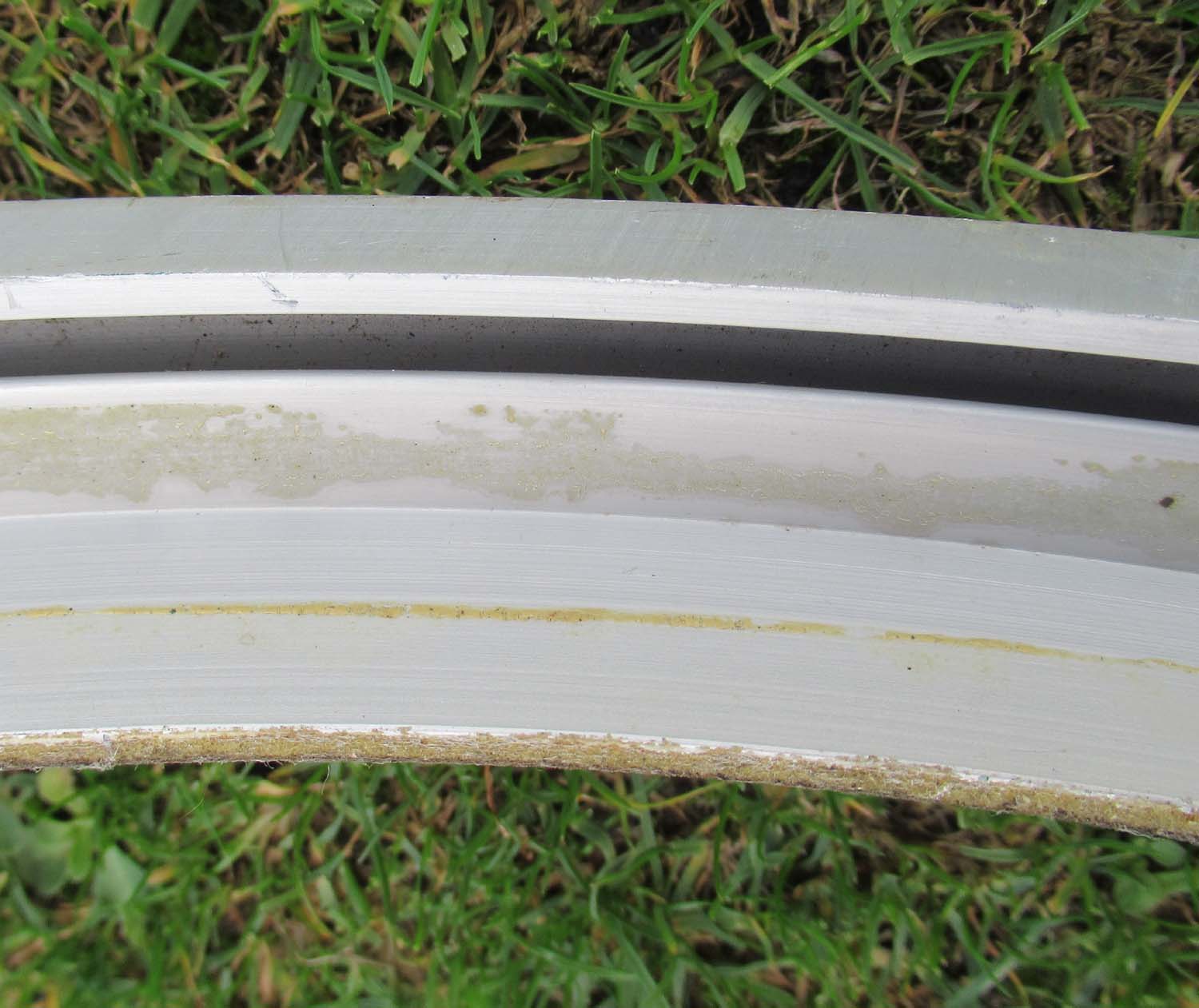
£200


|
B17 Flying Fortress
Astrodome Ring (No 2 pg1 Canopy)
Here we have a ring as used on
the Astrodome of the B17.
This is in good condition and
has a protective plastic on the underside.
Measures approximately 603 mm
in diameter.
Ref No: LMC-539RS
Click on pictures to enlarge
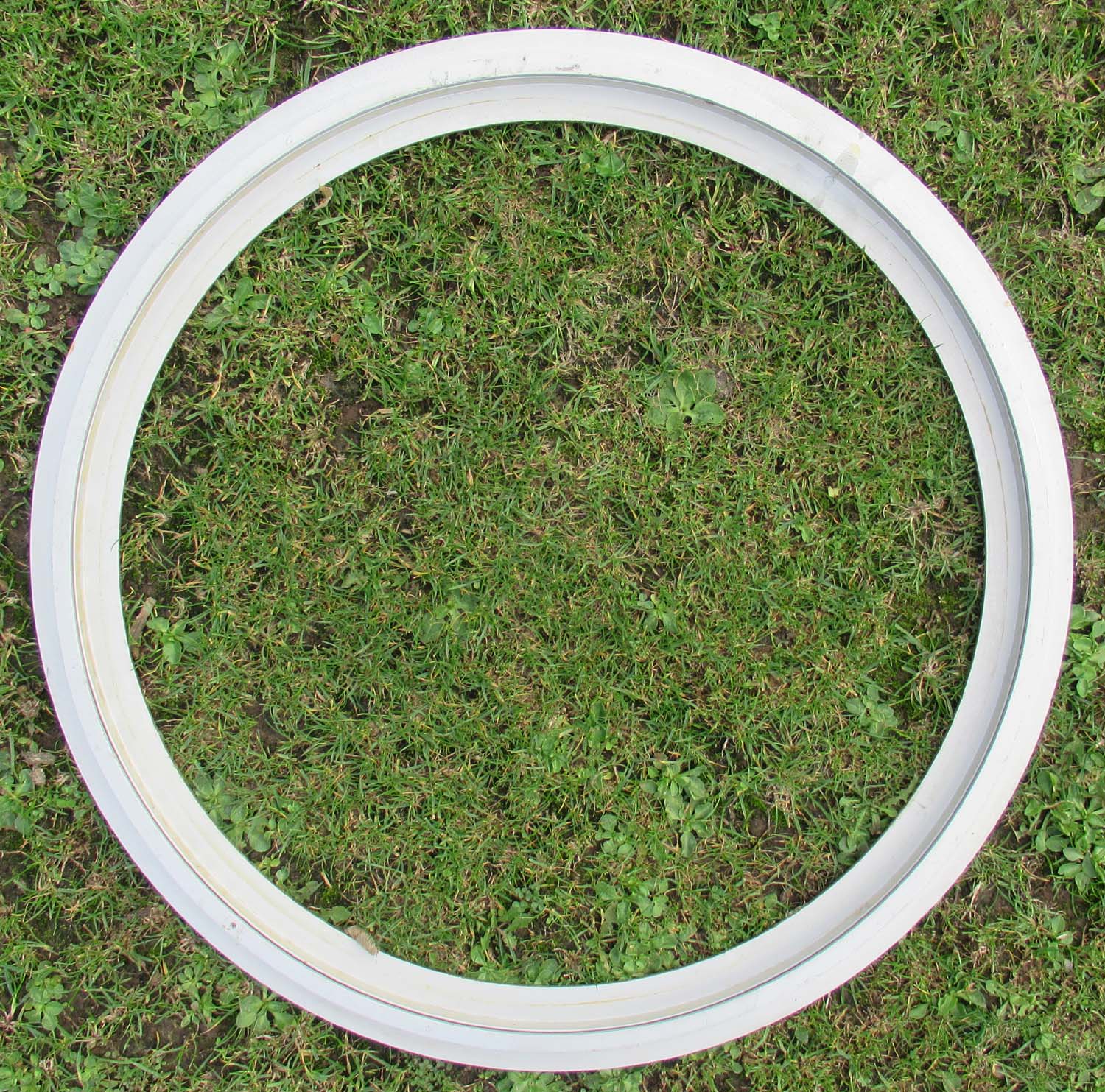
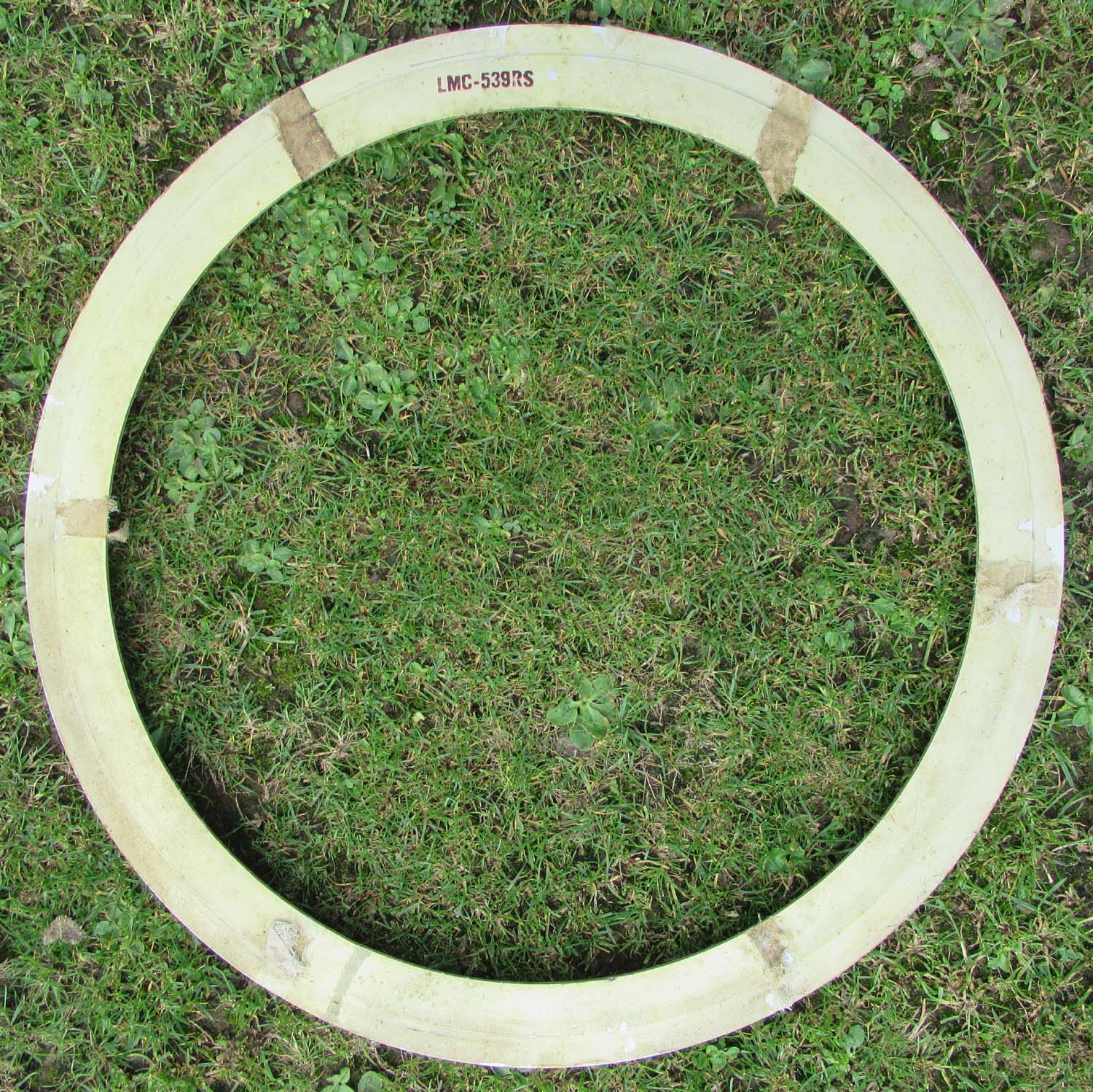
Below: Boeing B17
"Flying Fortress"
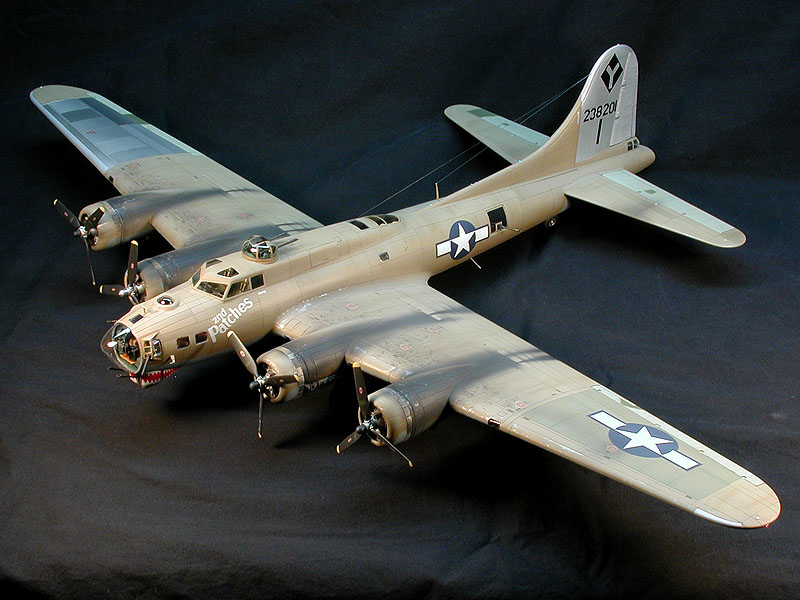
|
|
Click on pictures to enlarge
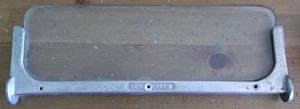
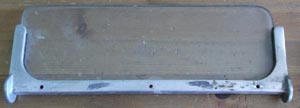 |
Aero Screen (No
1 pg1 Canopy)
A nice aero windscreen in
good condition. Believed to date from the 1930's from an open
cockpit aircraft. The specific aircraft has not been
identified,
email me
if you can identify this part.
£299


|
|
Click on pictures to enlarge
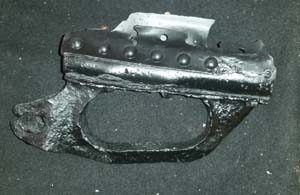
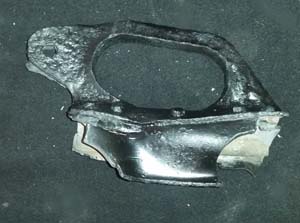
|
Bristol Blenheim
Canopy Handle (pg 3 relic nos 24)
Here we have The Handle for
the Sliding Canopy of the Bristol Blenheim
It is made of Steel and has
part of the aluminium frame attached
It has Been Rust Treated and
Sprayed Black
This was recovered from the
Arnhem Area of Holland
Please Click here for Link to
Relics
|
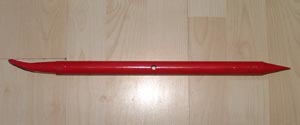 |
Spitfire crowbar (pg1 Can)
An exact copy of the crow bar
which was clipped to the Spitfire door for use in
emergencies when the canopy jammed.
Awaiting new
stock
|
|
Click on pictures to enlarge
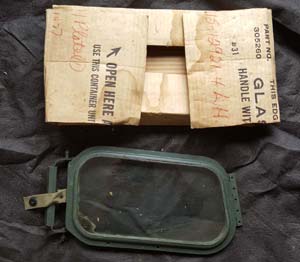
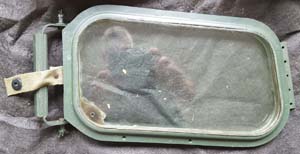
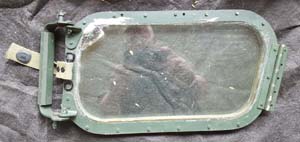
|
B17 Windscreen 1 (pg1 Can)
Here is an example of a front
windscreen for an early B17 this window was designed to open
and was their only means of demisting in the early Mks.
It
comes in its original box the glass has some slight damage
please enlarge the pictures to asses.
Part No: 305260
Click on pictures to enlarge
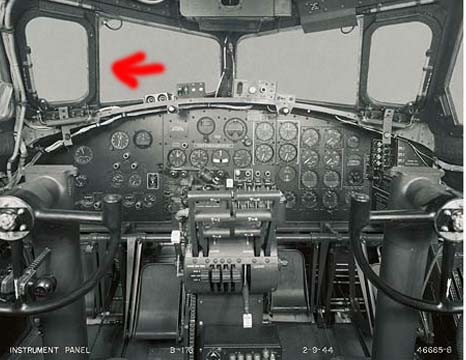
Seen in situ above note
the strap position to orientate the piece.
Out of stock
more wanted
contact me
|
|
Click on pictures to enlarge


Seen in
situ under in a Spitfire door.
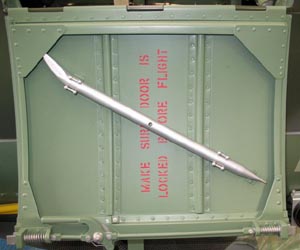 |
Original Spitfire crowbar (pg1 Can)
This is a complete original
crowbar for the spitfire with a hollow tube and two solid
ends.
Click on pictures to enlarge

Out of stock
more wanted
contact me
|
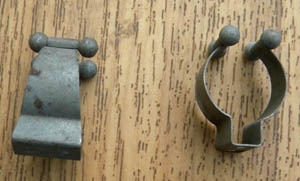
similar clips
for pipe work available here link |
Original Spitfire crowbar clips (pg1 Can)
Clips for attaching the crow
bar to the Spitfire door original and in excellent
condition.
Out of stock
more wanted
contact me
|
|
Astrodomes were
prominent on RAF multi-engine aircraft of the WWII as a
considerable part of their operations were carried out at
night.
Click on pictures to enlarge
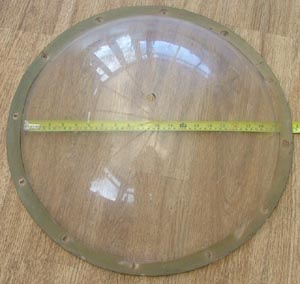
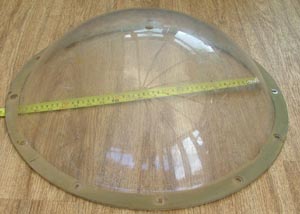
Astrodome
on a Warwick
|
Astrodome (pg1 canopy)
Here we have an astrodome
from as yet unidentified aircraft although I suspect this is
a generic part as they all seem to be pretty much the same
size..
An astrodome is a
hemispherical transparent dome fitted in the cabin roof of
an aircraft for the purpose of allowing the use of a sextant
during astro navigation
Prior to the introduction of
electronic means of navigation the only way to fix an
aircraft's position at night was by taking star sights using
a sextant in the same manner as that used by marine
navigators on board ships. To do this requires a 360-degree
view of the horizon and the astrodome was devised to allow
an uninterrupted view of the sky from horizon to horizon.
Astrodome on
a Halifax
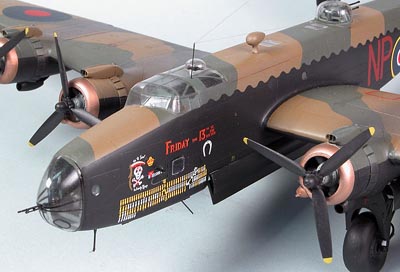
Out of stock
more required
please contact me |
|
Click on pictures to enlarge
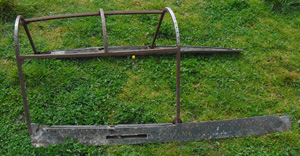
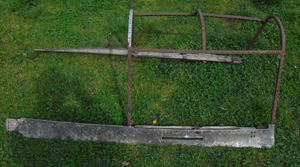
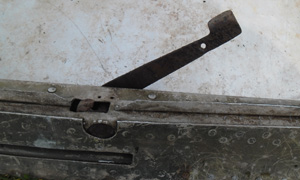

Out of stock more wanted
contact me |
P47 Thunderbolt Razor Back canopy frame (pg1 can)
Here is a P47 razor back canopy
frame, we purchased this on a trip to Arnhem but it was
actually recovered in the Ardennes. Although its history has
been lost its almost certain that it took part in that
campaign due to its recovered location. The alloy part
appears to be in good condition and the whole piece is
straight . The steel frame has some light corrosion being
steel this is to be expected and will be painted with primer
prior to going into our store to preserve it. It is missing
its ere section steel frame but is otherwise complete.
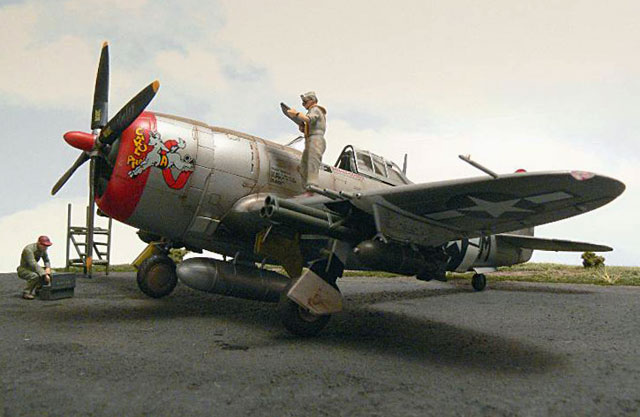
The
Republic Aviation P-47
Thunderbolt fighter was the largest and
most powerful single engine fighter of
the war. Production topped any other
USAF fighter with 15,683 P-47’s
produced.
Due to the shape of the fuselage, the
Thunderbolt was known affectionately as
the "Jug" by its pilots and ground
crews. Two distinctive versions were
produced:
The earlier
"Razorback"
design and later versions with a “bubble
top” canopy.
The P-47 was armed with eight wing
mounted Browning .50 calibre machine
guns which could deliver 13 pounds of
lead per second.
When loaded with armour-piercing
incendiary (API) rounds the .50 calibre
did considerable damage to light
armoured vehicles, trains, and aircraft.
The P-47D-25 could carry 2500 lbs of
external stores; this variety of HE
bombs, incendiary bombs, napalm, and
rockets gave the thunderbolt a hard
punch.
Seven of the top 10 European American Aces flew
the P-47 Thunderbolt against the
Luftwaffe.
Thunderbolt’s knocked 3,752 enemy
aircraft out of the air while destroying
another 2,800+ on the ground.
The heavily armoured plane sustained 824
combat losses, only .07% of the Jugs
didn't return from a combat mission, the
lowest total of any Allied fighter.
The Thunderbolt was the largest and
heaviest single engine fighter flown in
WW2, yet could fly at 425+ miles per
hour straight and level.
|
|
Click on pictures to enlarge
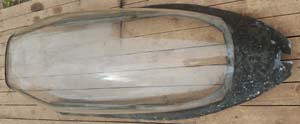
 
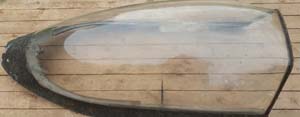
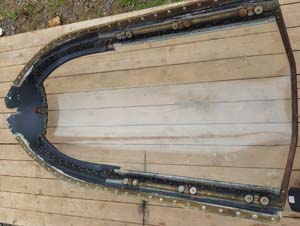 |
Hawker Tempest MK II Canopy (pg1 Can)
Here is
a superb low back canopy from a Hawker Tempest . I
believe this also fits the Hawker Fury The Perspex is also quite clear for its age please
enlarge the pictures to assess its condition.
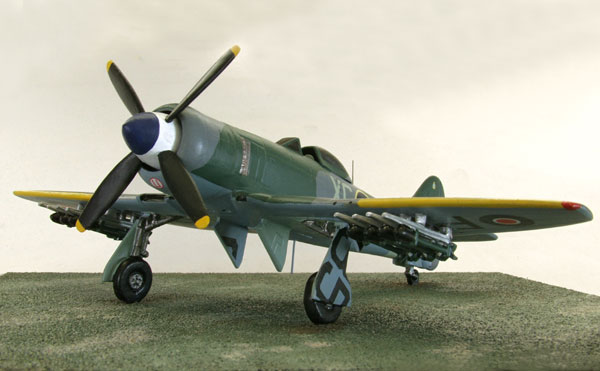
Shown above the Hawker
tempest MK II.
Initially conceived as an upgraded, thin-wing
Typhoon, the Tempest reached the ultimate in piston fighter
performance. The Tempest Mk.II was designed to accommodate
the Bristol Centaurus radial engine, thus loosing its
beard-type radiator so typical for the Napier Sabre-powered
Typhoons and Tempests. The prototype Tempest II made its
maiden flight on June 28, 1943, but the production machines
of this mark arrived just too late to take part in the war.
Instead, the elegant Mk. II served with RAF squadrons in
Germany and in the far East, being also sold to Iranian and
Indian air forces. The aircraft evolved further into the
last Hawker propeller-driven classic - the Fury.
Out of stock more wanted
contact me
|
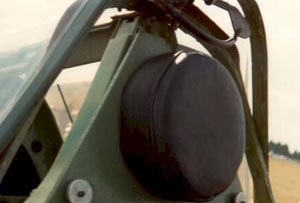 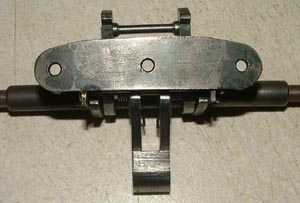 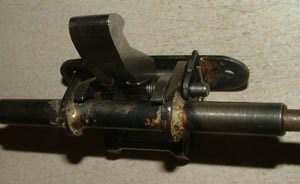 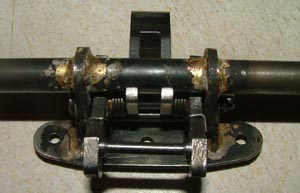 |
Spitfire Canopy Catch (pg1 Can)
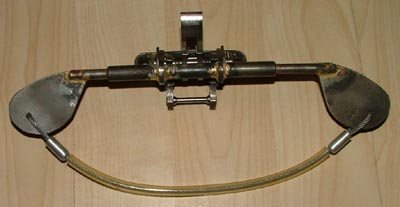
A new
made fully functioning canopy catch for a Spitfire.
Identical to the original, The supplier informed me these
are made to flying standard subject to the required check's.
I am selling them as display only. Original functioning
catches are as rare as fairies at the bottom of the garden.
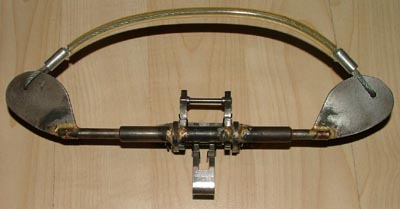
Out of stock more wanted
contact me |
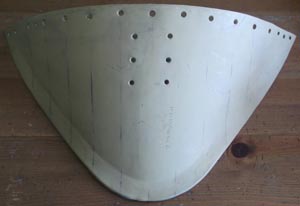
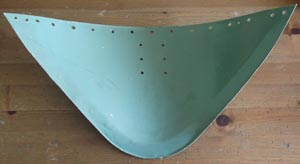
Out of stock more wanted
contact me |
MK XVIII Spitfire low back fairing (pg1 Can)
This is an original fairing
from a MK XVIII bubble canopy low back Spitfire in good
condition with no visible corrosion. This MOD plate came
from the aircraft this piece was taken from and was lost in
the store for a long time , happily I found it recently and
so this aircraft pieces identity has been restored. This MK
XVIII Spitfire was built at Castle Bromwich.
Externally the Mk XVIII was very
similar to late production Mk
XIVs.
It had the bubble canopy and cut back fuselage. It was armed
with the “e” wing, with two 20mm cannon and two .50in
machine guns, or four 20mm cannon. 300 were produced, 200 of
which were FR (Fighter Reconnaissance) aircraft, which
sacrificed some fuel capacity to carry two F.24 vertical
cameras and one F.24 oblique camera. It used either a 2,035
hp Griffon 65 or a 2,340 hp Griffon 67. The Mk XVIII saw
service after the Second World War, in Malaya and in
Palestine. I have so far had trouble with the serial number
it does not seem to appear in the list of Spitfire serials
but it may have been exported or modified and this sometimes
changed the serial number.
Spitfire Part
number
37930/69
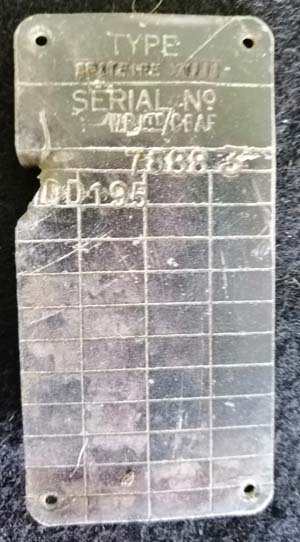
|
|
Click on pictures to enlarge
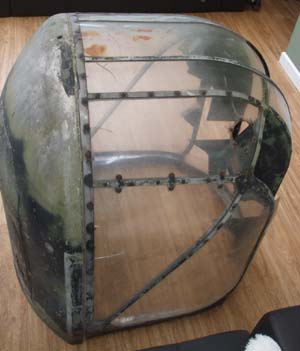
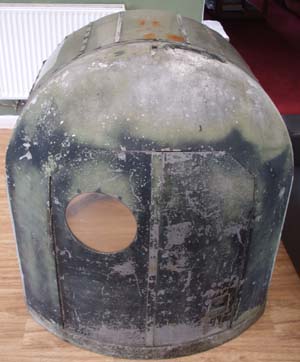

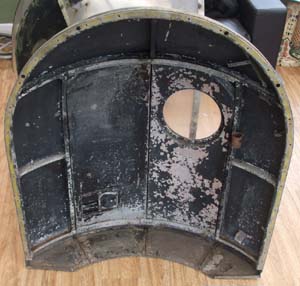
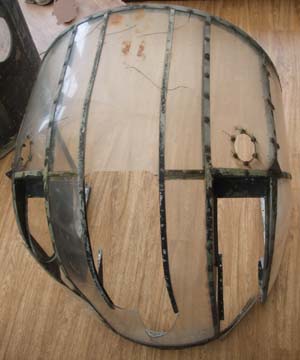
|
FN 4 Turret cupola (pg1 arm)
This is an incredibly rare FN
4 Rear four gun Turret cupola. It is in good condition "see
pictures" considering its age and is rare enough to be
almost unique. It also has its original doors again in good
condition for its age.
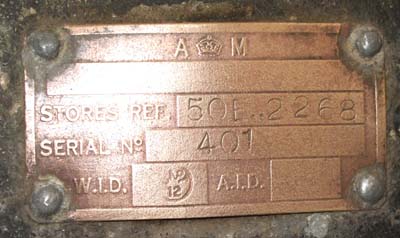
There seems to be some
confusion about this Turrets origins, however the chap I got
it from told me His Granddad removed it personally
from a Lancaster although it seems it may also have been
fitted to a Short Stirling at sometime in its operational
life.
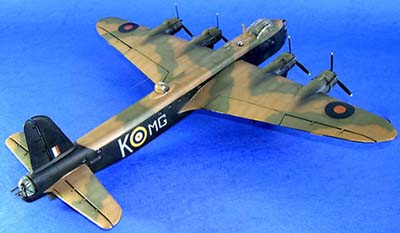
Nash & Thomson was
established in 1929 at Kingsdon-upon-Thames by business
partners Archibald Frazer-Nash and Henry Ronald Godfrey. The
company was formed to develop the turrets that Frazer Nash
had originated, and their designs were consequently numbered
in a series prefixed "FN".
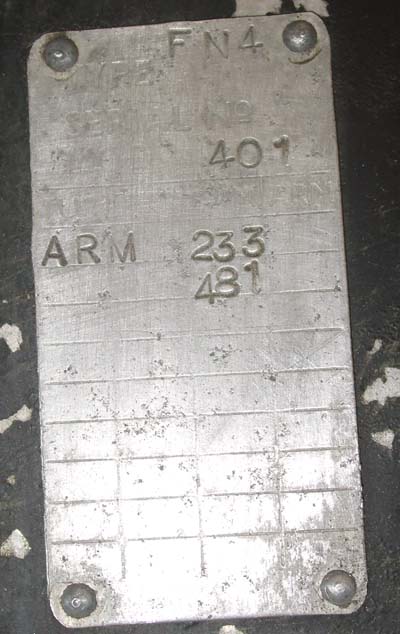
For UK customers we can
deliver or you may collect. For customers who require
shipping and for international buyers this canopy will
have to be transported in a crate and this will be an
additional cost of around £50.
Click here to see this in armaments
Out of stock more wanted
contact me |
|
Click on pictures to enlarge
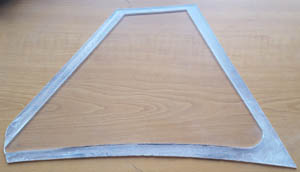
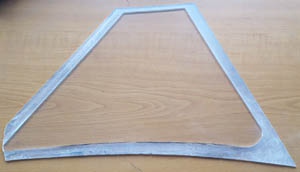
|
Spitfire Side screens (pg1 can)
Here is
a pair of Spitfire side screens left are right they are
correctly rebated to fit into the Spitfire windscreen. They
are clear with no visible scratches. Please click on the
pictures and enlarge them for a better look.
Click on pictures to enlarge
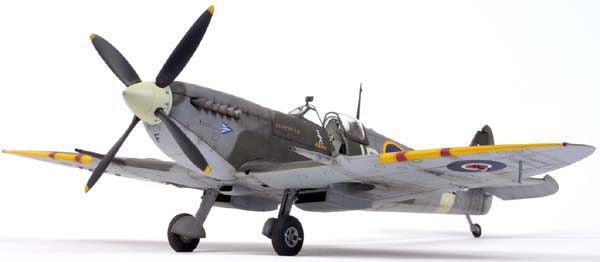
Out of stock more wanted
contact me |
|
Click on pictures to enlarge
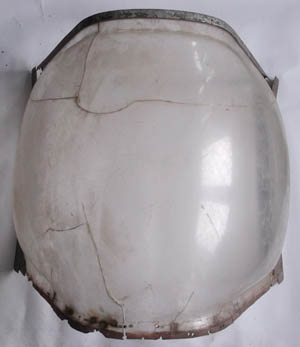
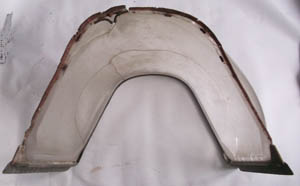
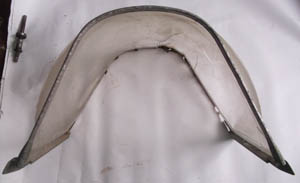 |
Original Spitfire Canopy (pg1 canopy)
Here we have an original
Spitfire canopy, it is in a very delicate state with several
cracks and the front hoop is missing. This was purchased
during our trip to
Arnhem , its actual history has been lost
but almost certainly saw action in this battle and is a nice
collectable piece. I believe this fits all MK's except the very early Mk
Is and of coarse the low backs with the bubble canopy.
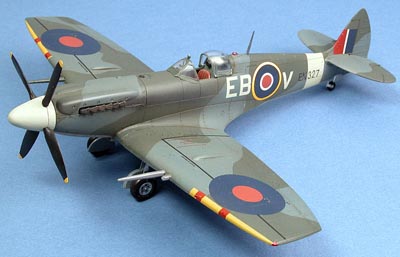
This will require a
packing case so
contact us
before purchase for accurate
shipping costs. You are welcome to collect.
Out of stock more wanted
contact me |
|
Click on pictures to enlarge
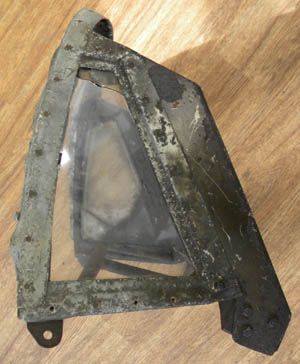
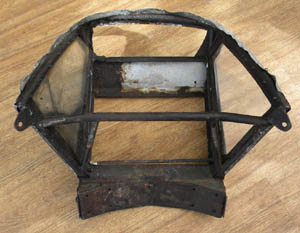
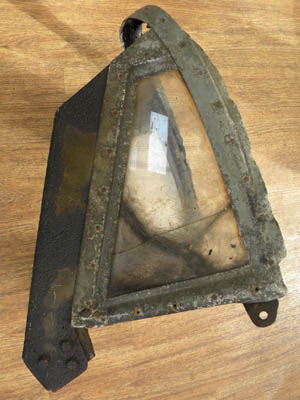 |
Mk I Hurricane screen (pg1 Can)
Click on pictures to enlarge
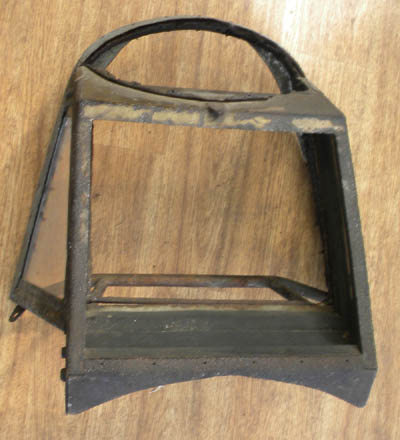
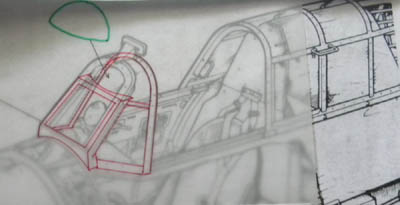
This is superb piece and
almost certainly one of a kind. This type of armoured
windshield located outside the windscreen, was only used by
the British and German Fighters before WWII.
This example is an
experimental installation for a Hurricane MK I. I have drawn
in a transparent paper, in red colour, the contour of the
piece over a drawing of a Hurricane windscreen as an
illustration. Apparently the set was completed with a curve
piece made out of transparent Plexiglas, which most probable
shape followed the contour drawn inn green.
Out of stock more wanted
contact me |
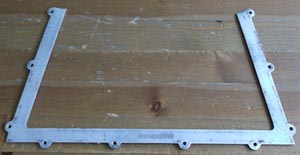
This is the piece that
holds the armoured windscreen in place and is an
original Spitfire part .
The part number 330 is
from a Spitfire MK III
The Mk III was the first
major redesign of the Spitfire. The new aircraft was based
around the Merlin XX engine, a 1240 hp engine with a
two-speed supercharger, which would have given much better
high altitude performance.
|
Spitfire armoured screen part (pg1 Can)

Spitfire Mk III
Prototype N3297 with Merlin XX engine
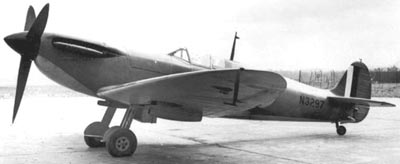
Out of stock more wanted
contact me |
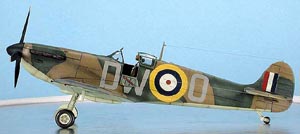
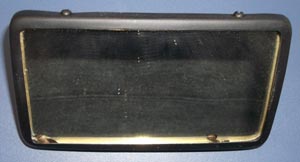
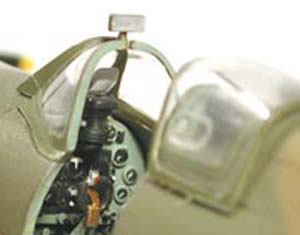
|
Spitfire MK I Mirror (pg1 Can)
This mirror is new and has
never been fitted in its original black finish. I has two
very small marks on the glass see the picture left but this
does not detract from its superb condition. A very
rare piece used in the early Spitfires and Hurricanes in the
Battle of France and the Battle of Britain , later
superseded by the round type mirror this item is 100%
original. It is marked with A/M Kings crown.
Out of stock more wanted
contact me |
|
Click on pictures to enlarge
 |
Spitfire Round mirror stalk (pg1 Can)
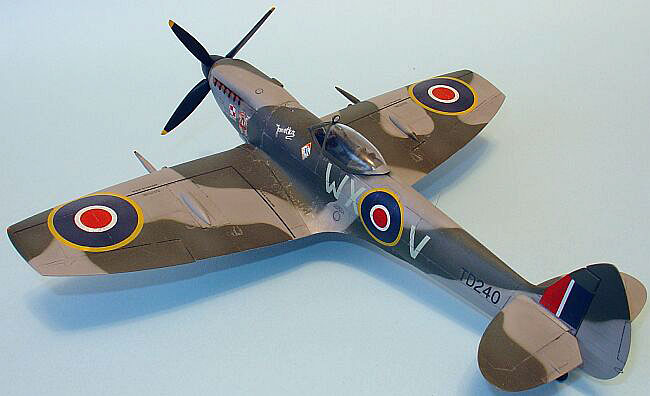
Original Spitfire mirror stalk in nice
original condition.
Part number 33030
It has 35 stamped on the reverse
Click on pictures to enlarge
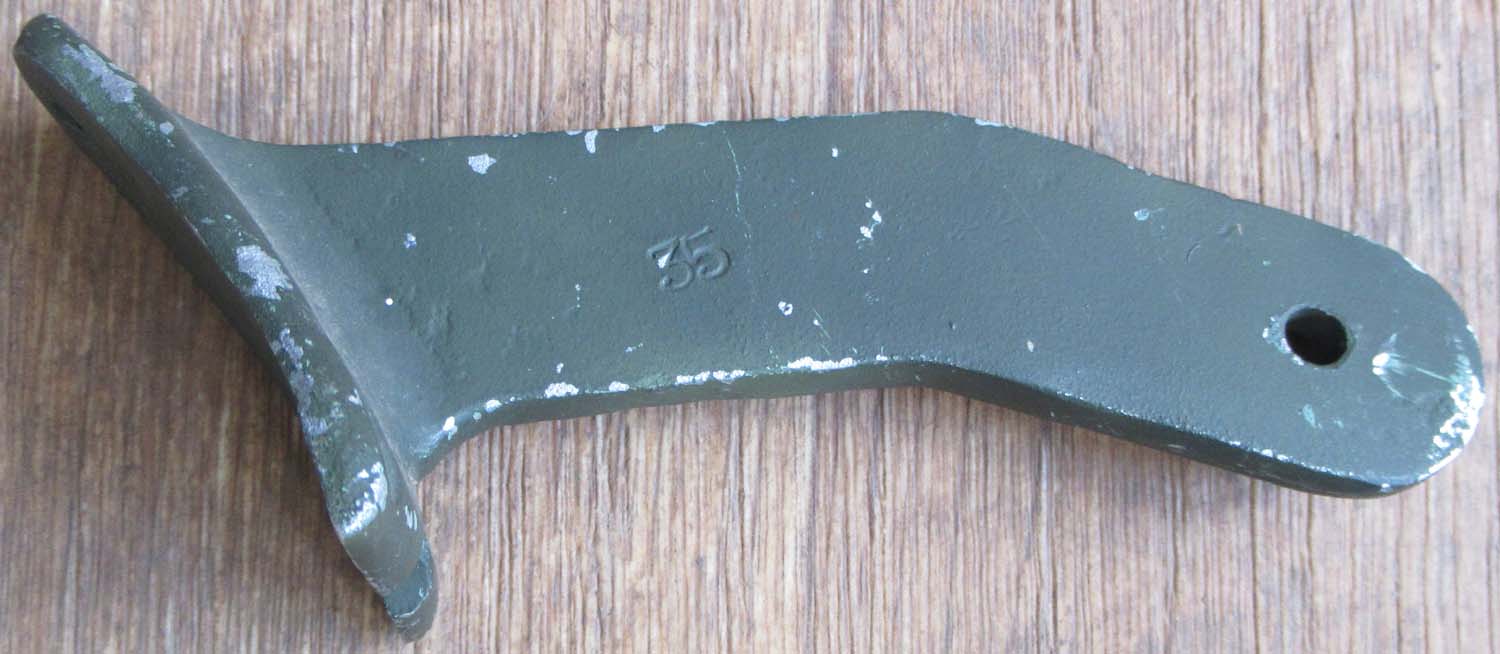
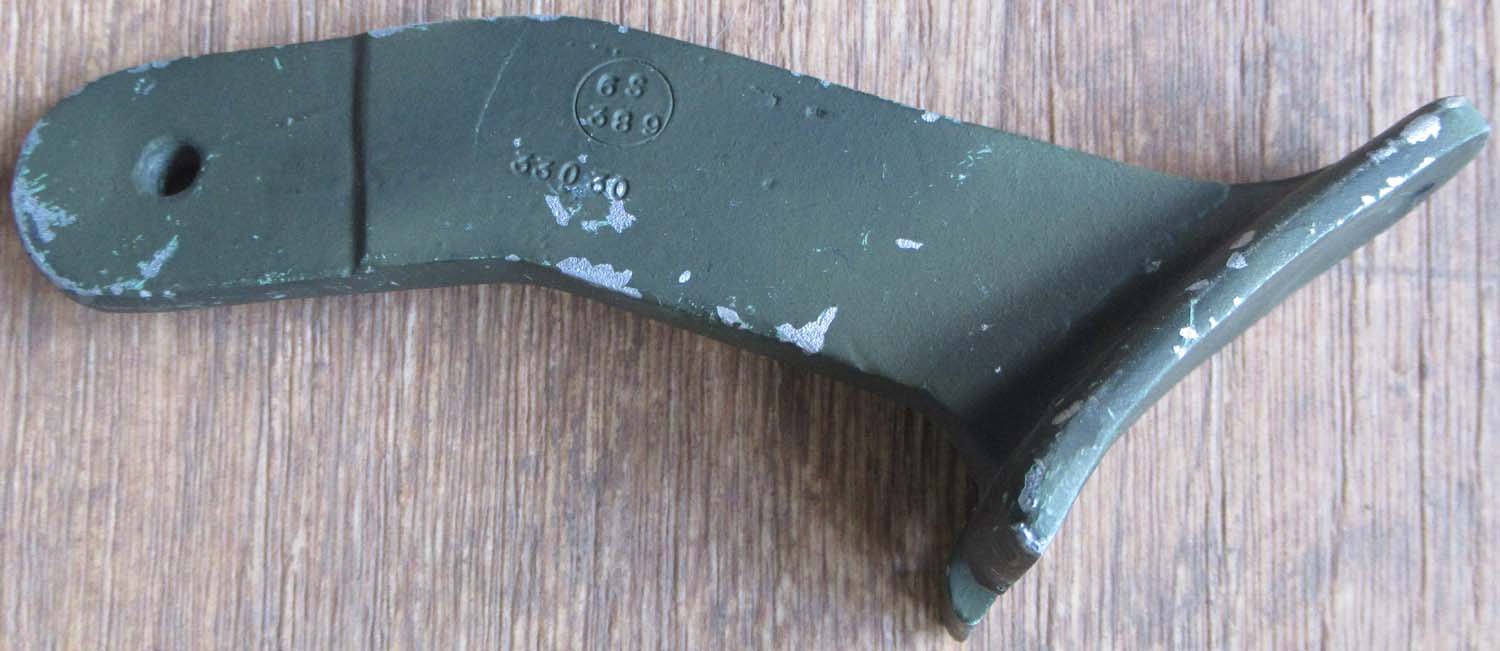
Out of stock more wanted
contact me |
|
Click on pictures to enlarge
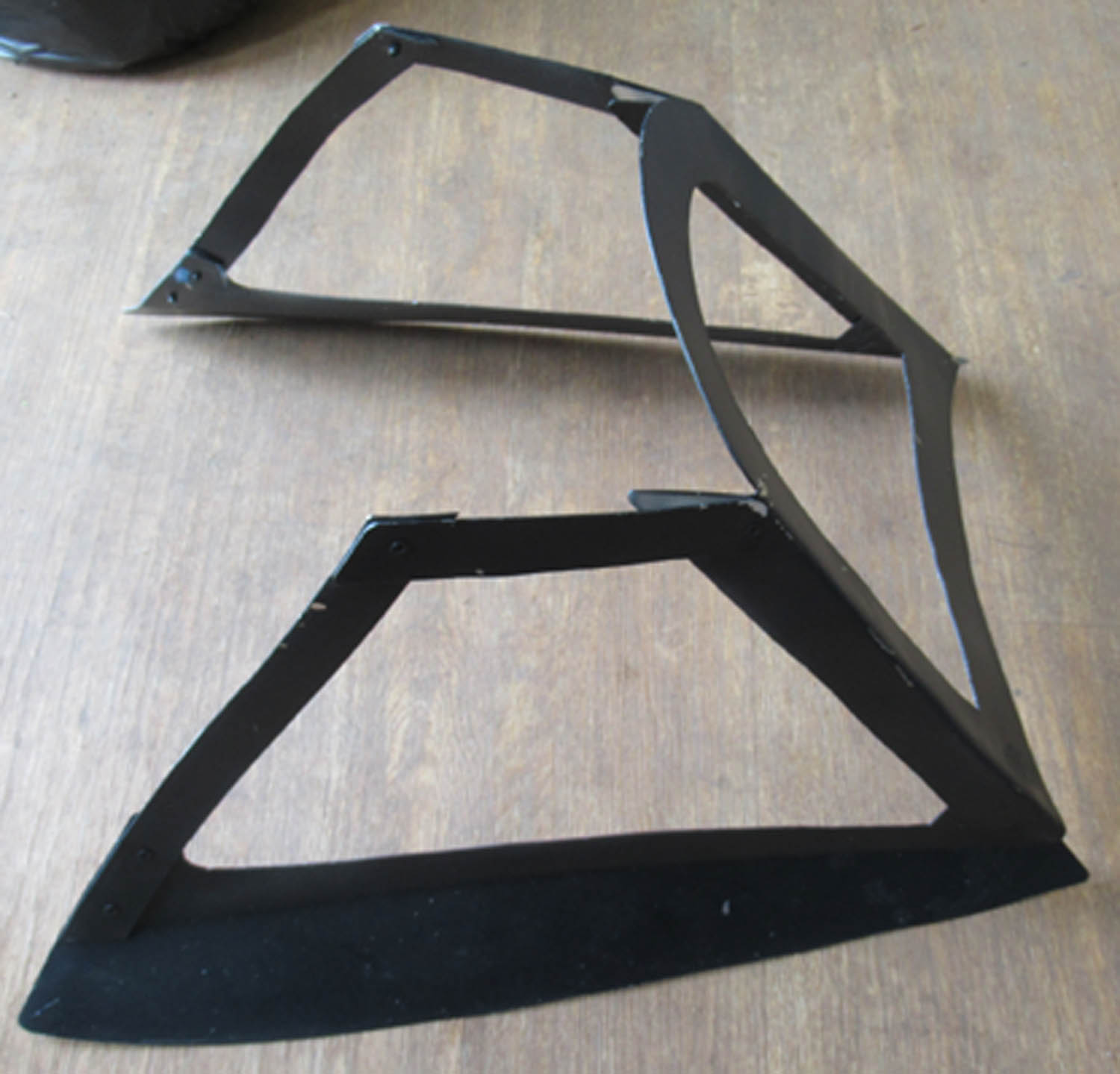
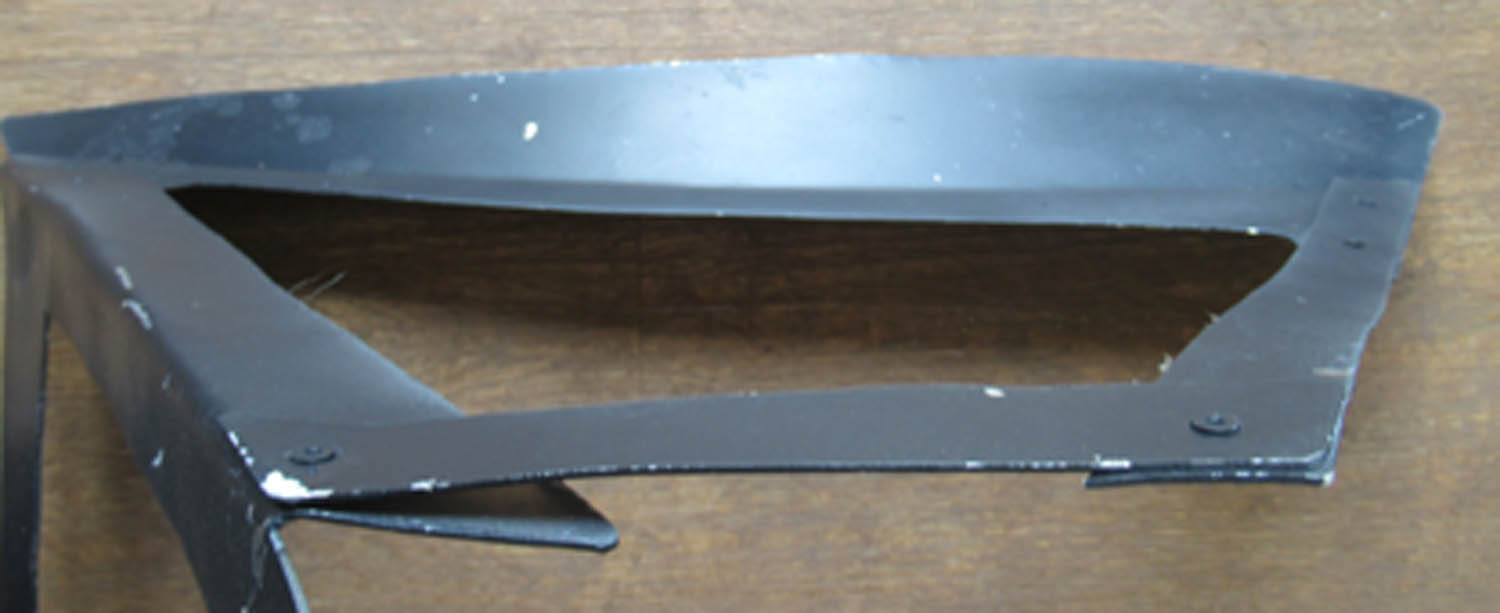
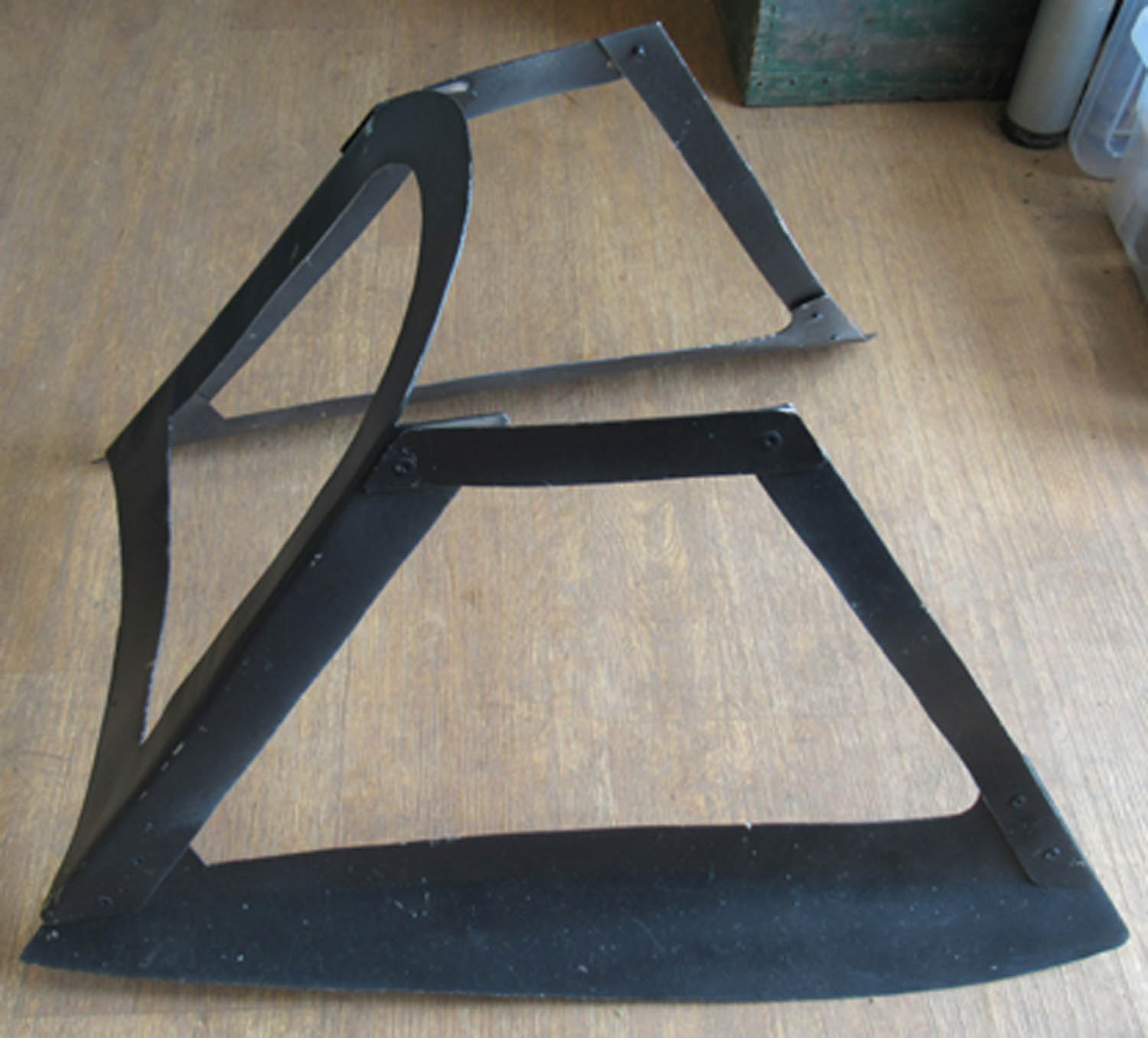 |
Spitfire front Screen (Pg1 Can)
Here
is a reproduction front screen for the Spitfire made of
alloy.
Perfect for
displaying a Gunsight or a cockpit build .
Click on pictures to enlarge
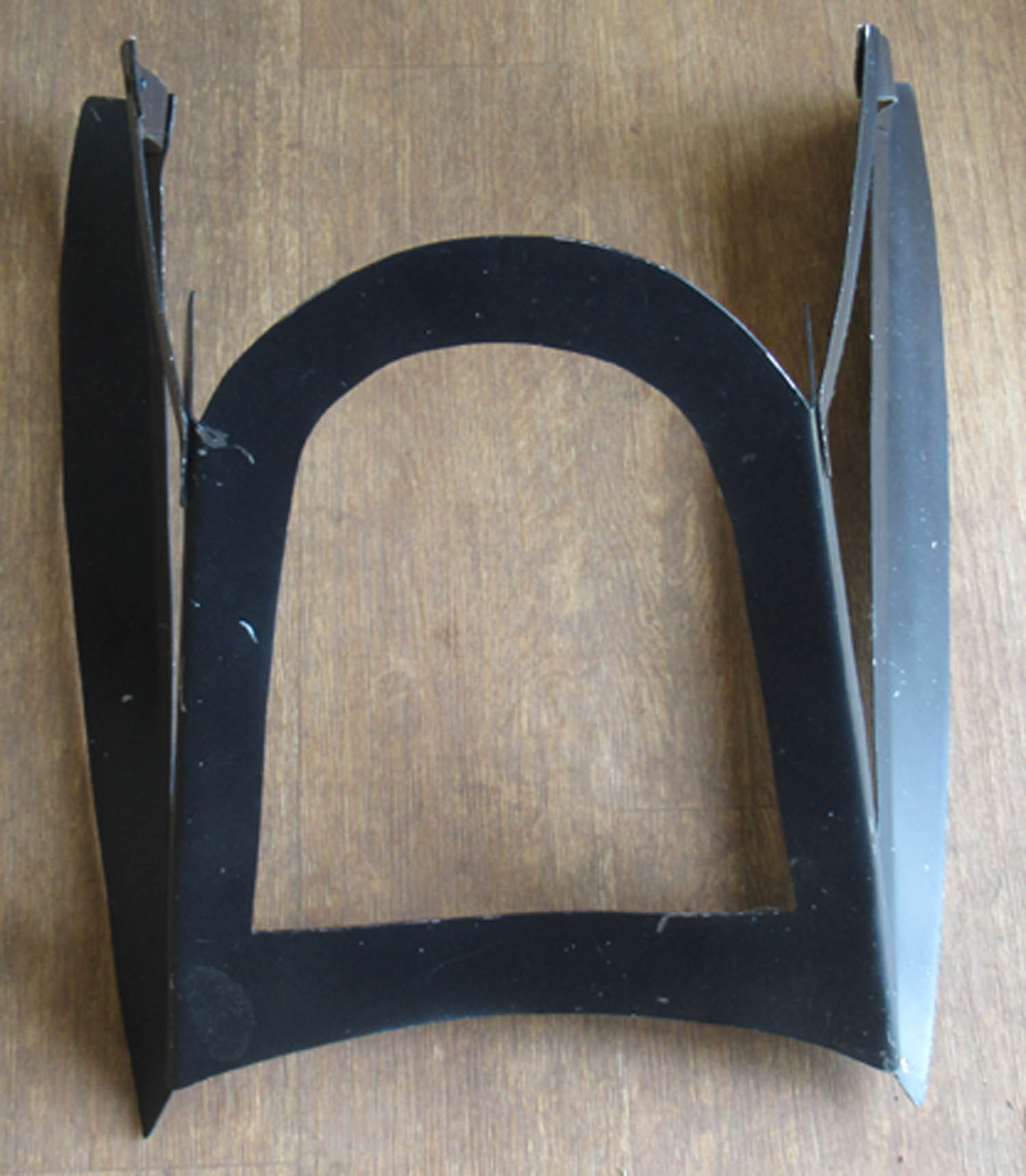
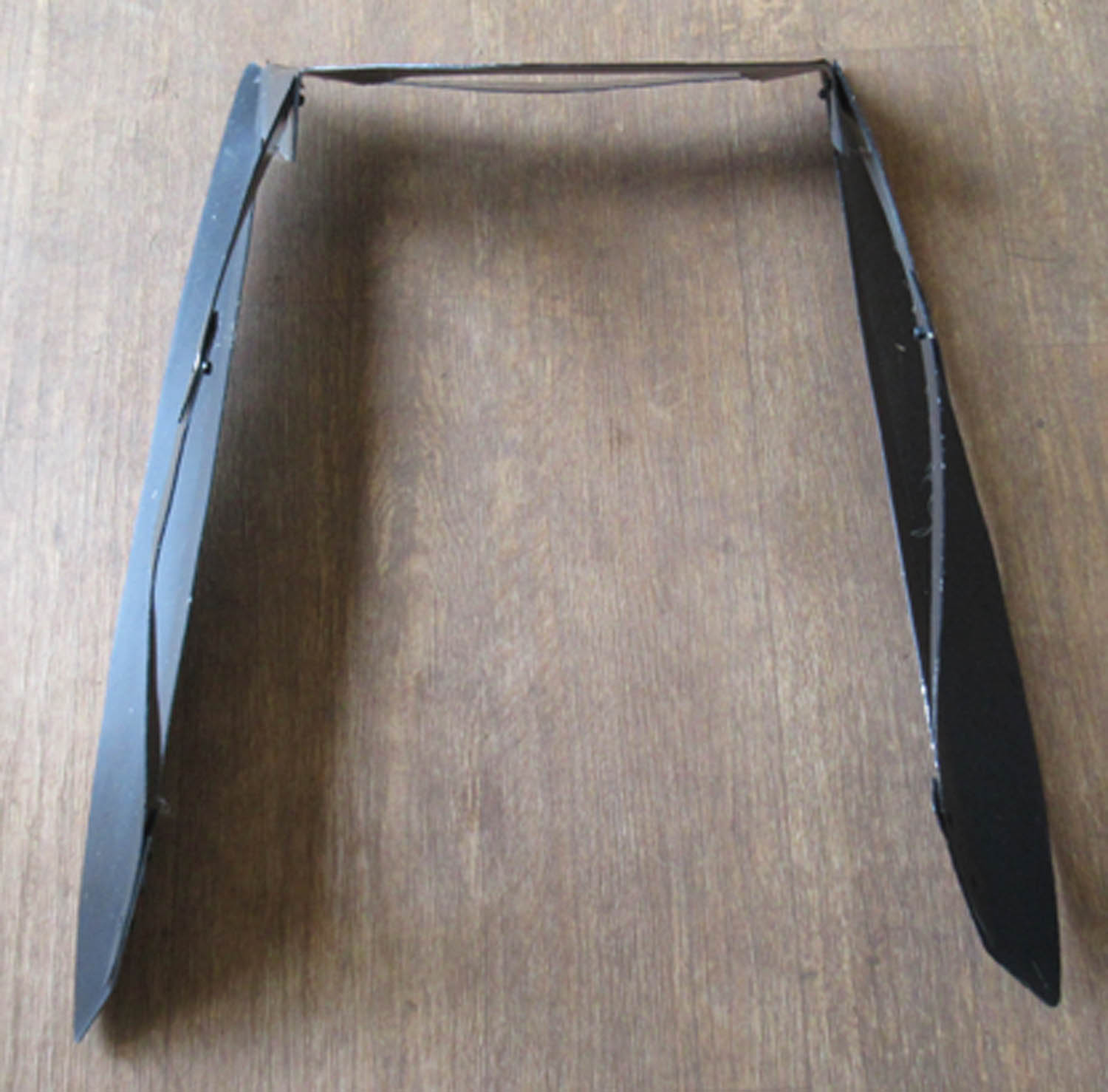
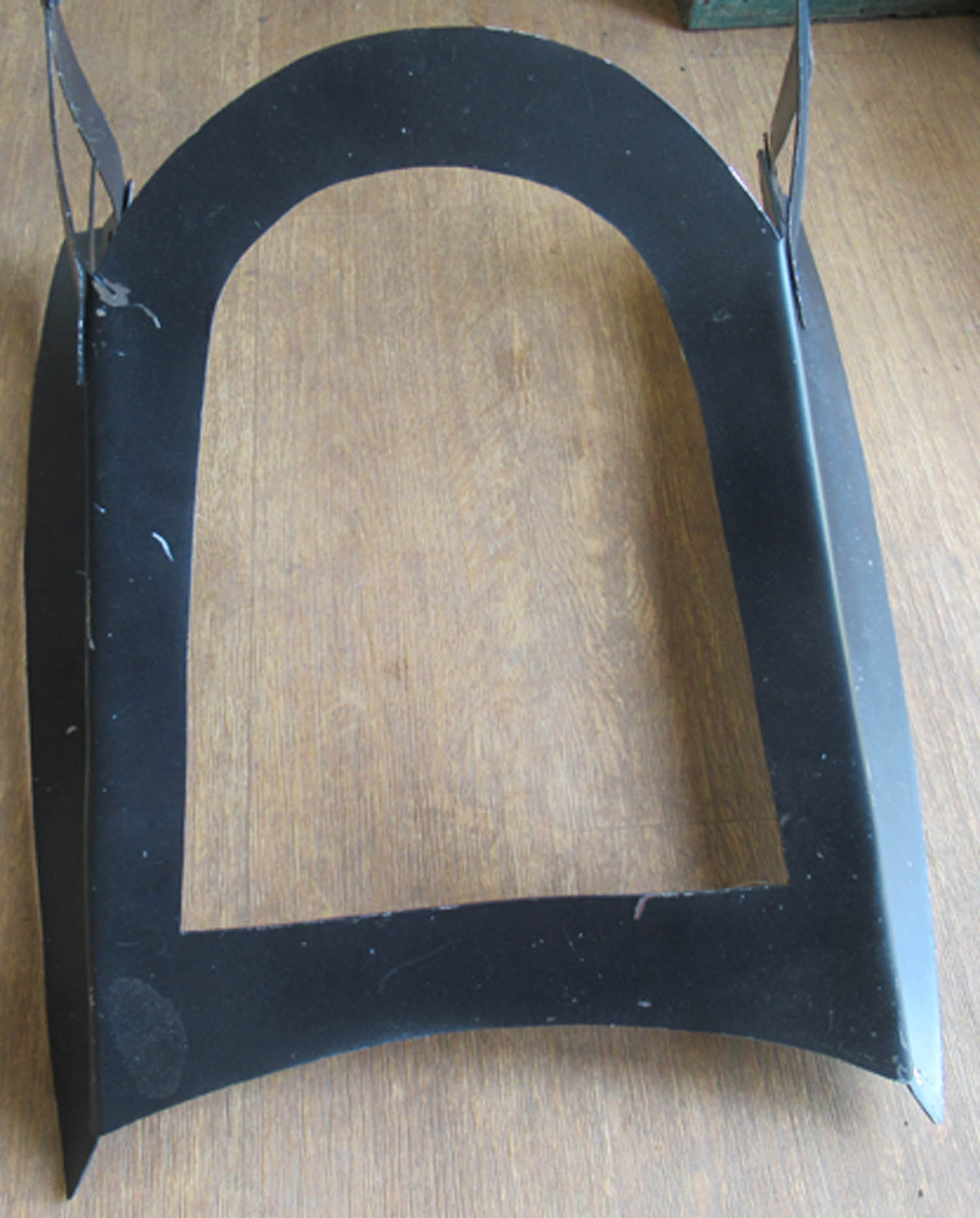
Out of stock more wanted
contact me
|
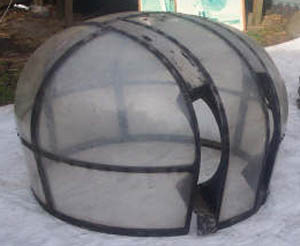 |
FN-50 Mid Upper Lancaster Turret canopy (pg1 arm)
Here is Lancaster canopy for the
FN50 mid upper turret. Click here
to see this in armanents.
Out of stock more wanted
contact me |

































































































































